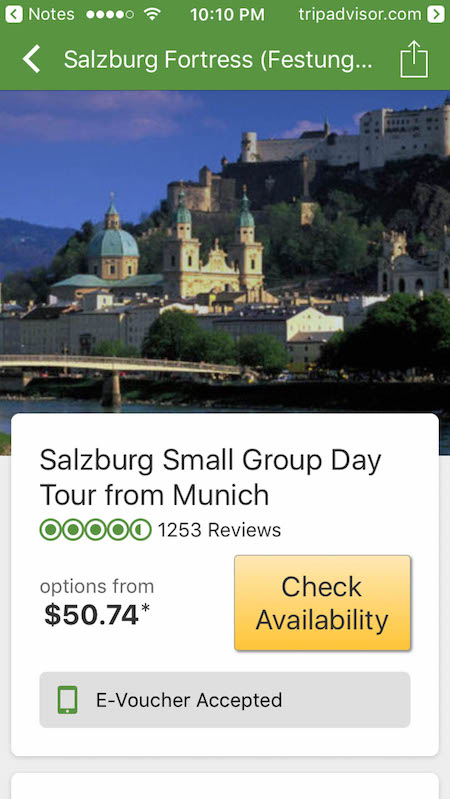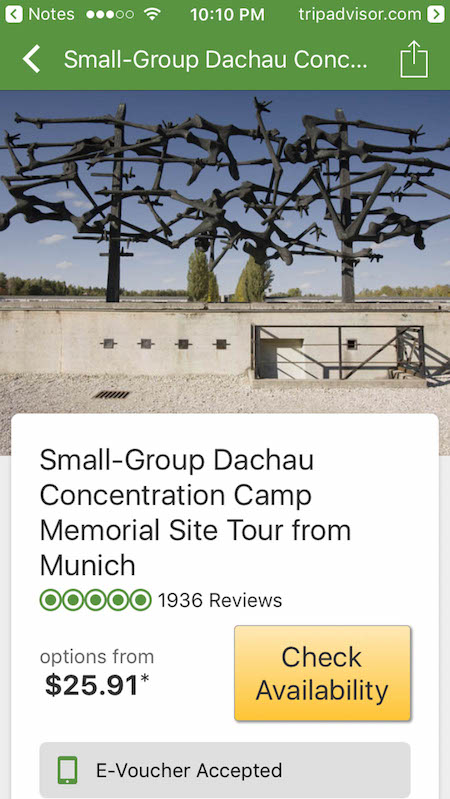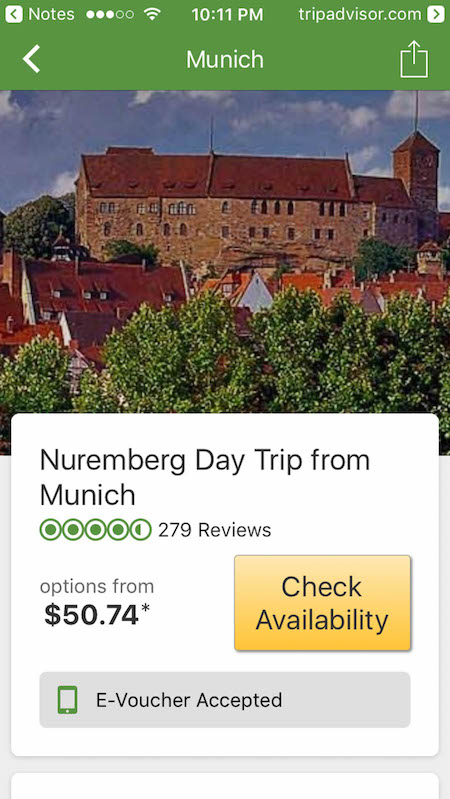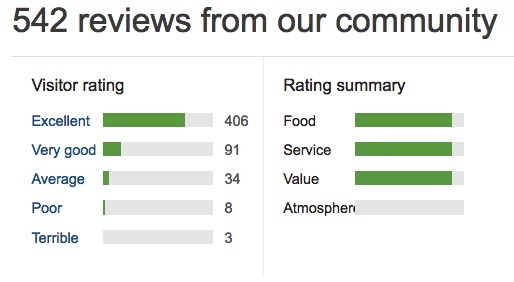Cyndy & Harper Head For Germany! (Page One)
January 11th and it is time for us (Cyndy and Harper) to go forth to Germany and visit Haley and sightsee for two weeks. January 11th through the 24th will never be the same!
Secret Decoder Ring needed if you do not know the family! Haley has been in Germany for a year studying/working. Cyndy is the mom of Haley and Harper and daughter of Donna and Bob Z. Cyndy decided to visit her daughter and Harper joined the adventure to visit his sister.
Please enjoy our trip with us!

We chose January and expected cold. The weather met our expectations!
July is the hottest month in Berlin with an average temperature of 18°C (64°F) and the coldest is January at -1°C (30°F) with the most daily sunshine hours being 8 in July. The wettest month is June with an average of 71mm of rain.
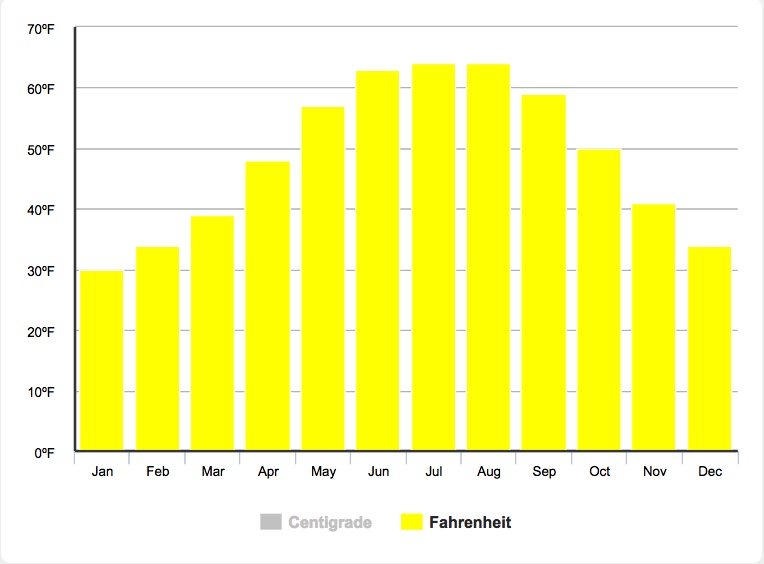
January??? Really???
Here We Go!
The first leg of the journey was LAX to Paris France. The tickets looked a little odd but Cyndy knows what she is doing!
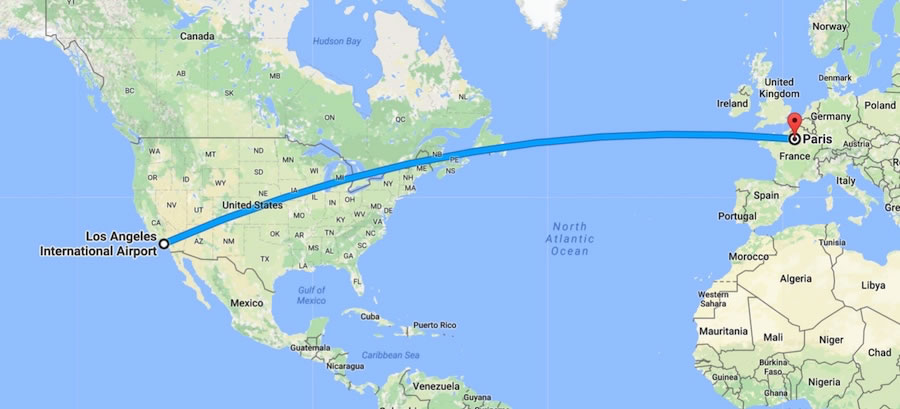
Distance from Los Angeles International Airport to Paris
5,654 mi
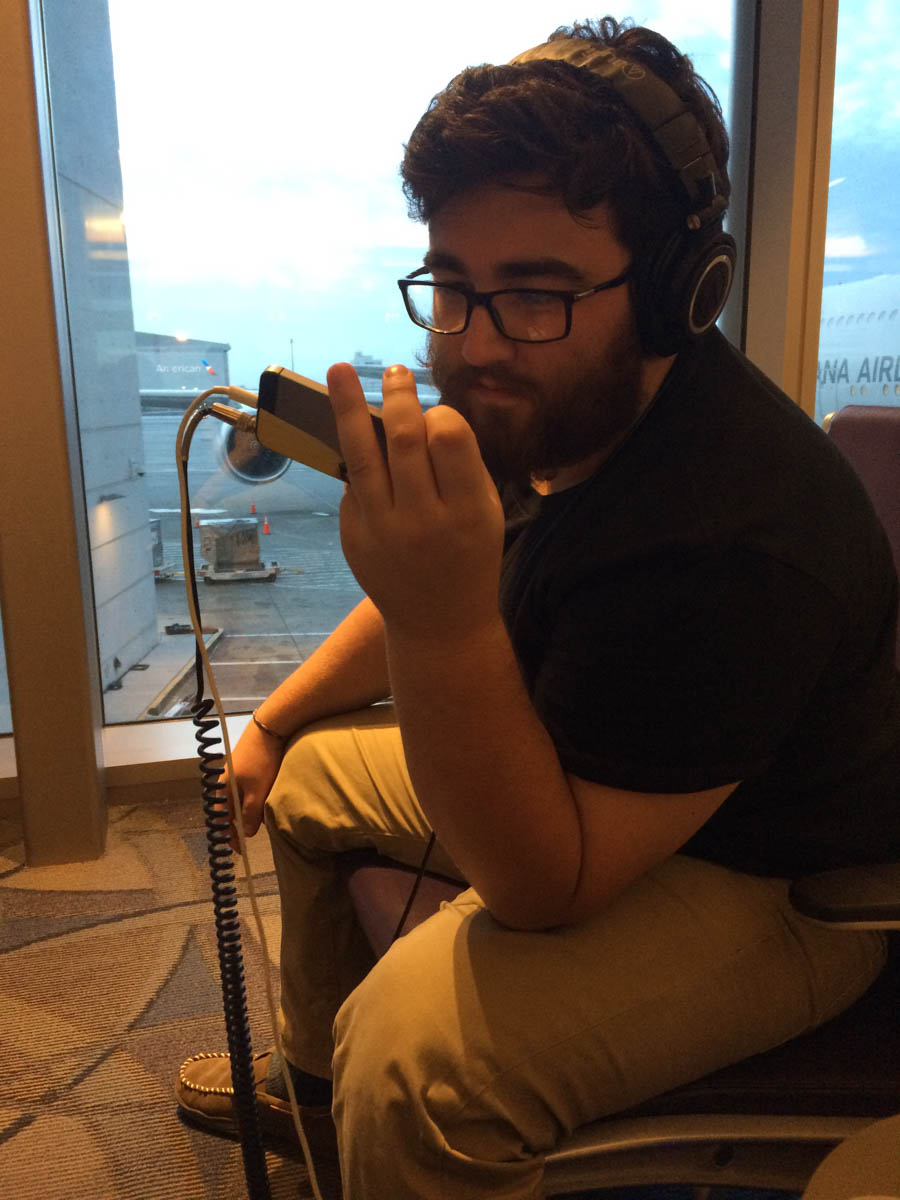
Checking out the electronics before boarding the flight
"Tower.... This is Harper One... Requesting Clearance for takeoff!"
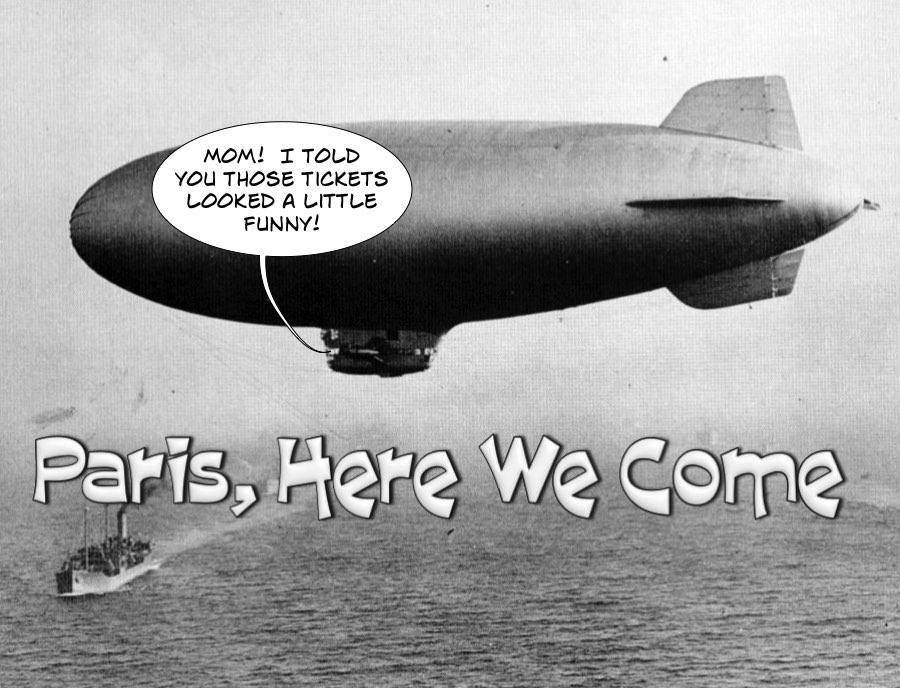
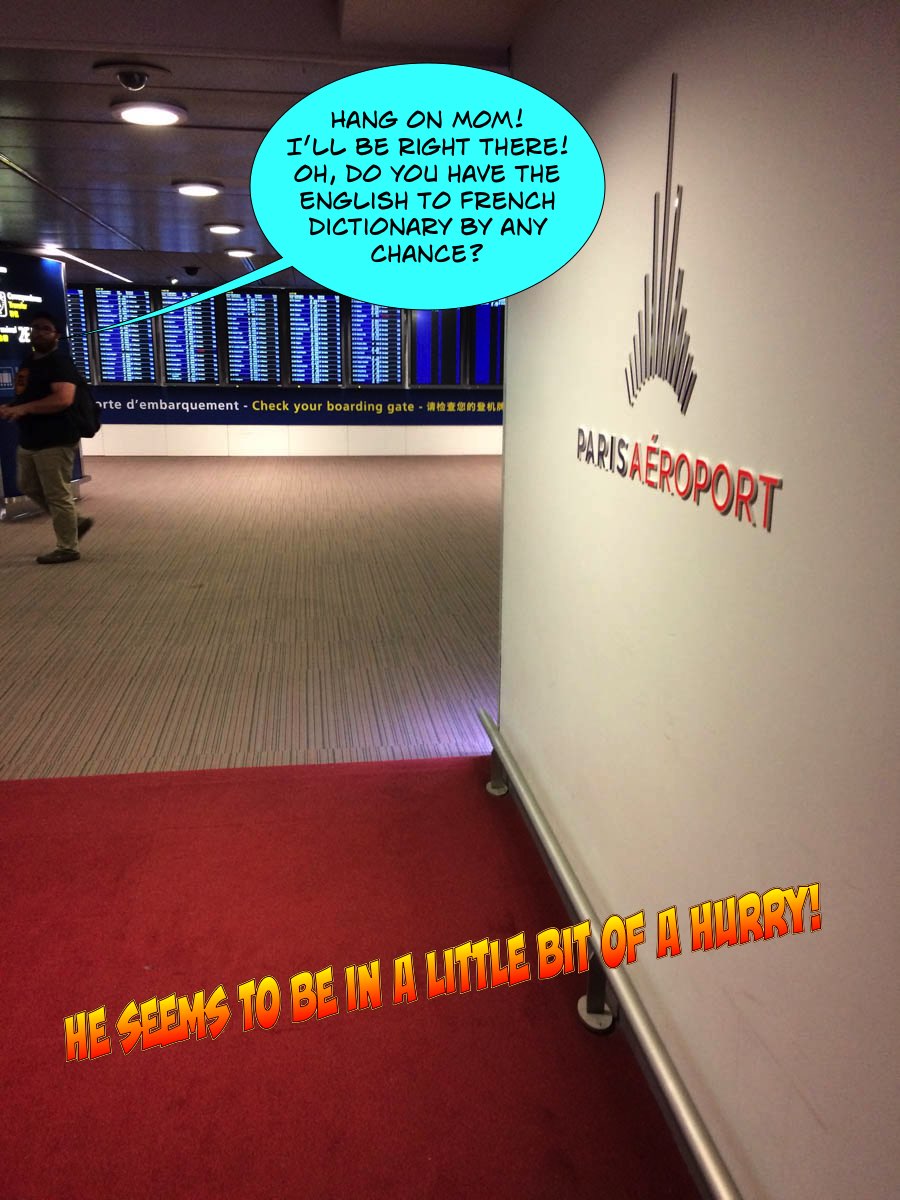
Like magic... We arrive on Terra Firma
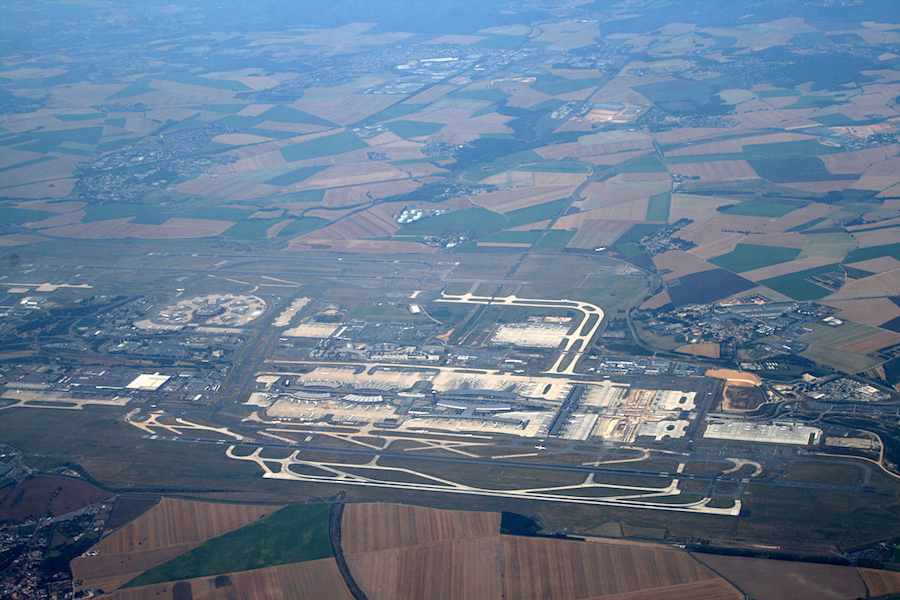
De Gaulle Airport just north of Paris

Harper needed a little more practice on his French...
He thought it was a urinal
Berlin, Her We Come
Did You Know? - The calculated flying distance from Paris to Berlin is equal to 546 miles which is equal to 878 km. (Note: Same distance as between Redding and Los Angeles)
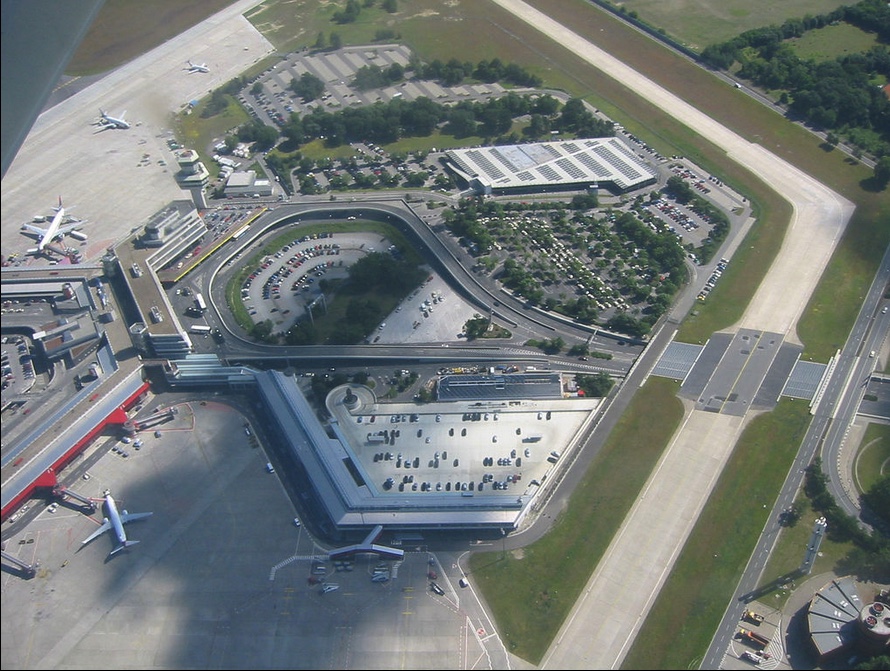
Berlin Tegel Airport means we are here and it is time to rest!
To The Heart Of Berlin...
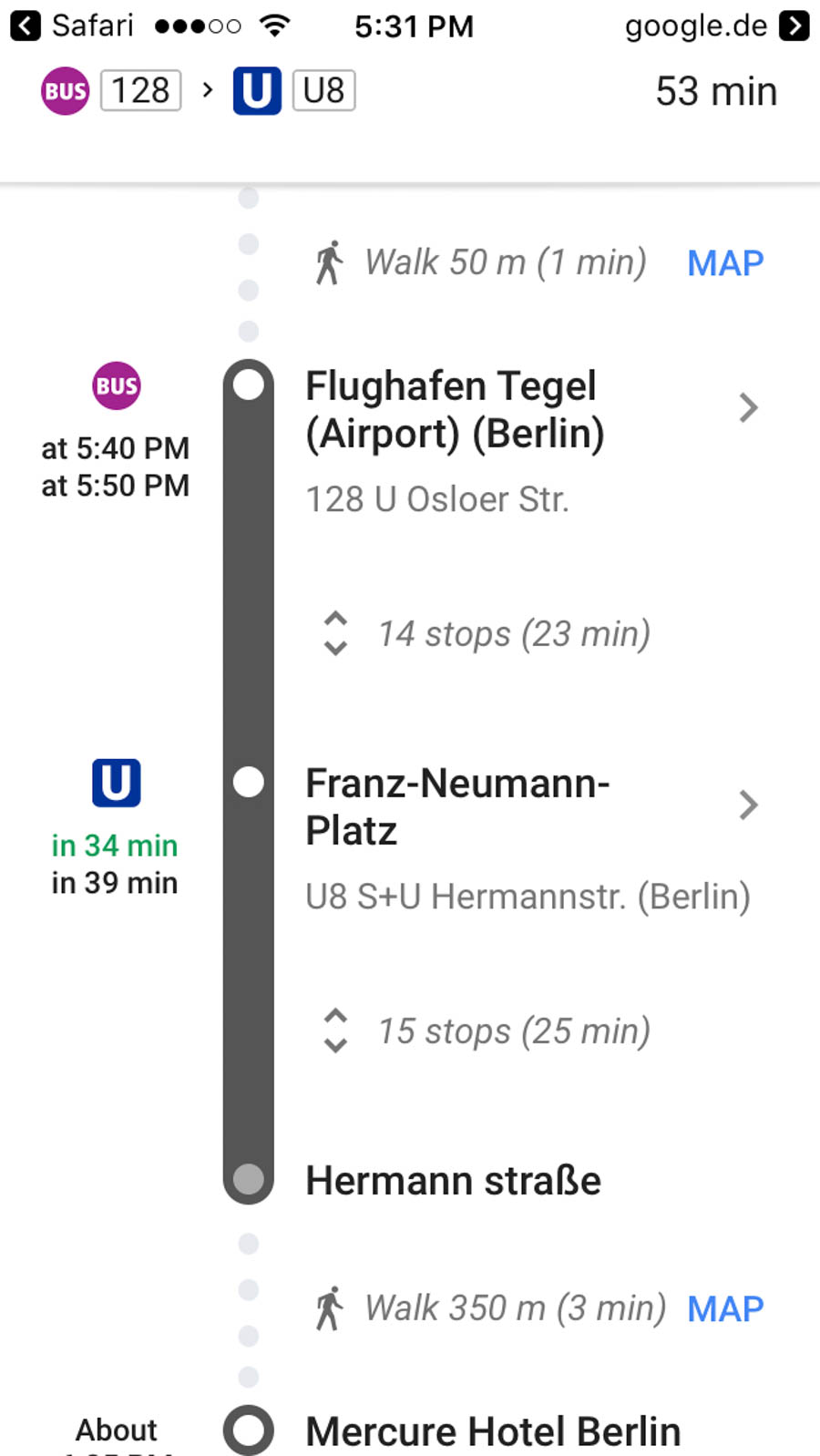
Just a little bit farther to our hotel!
Haley has this down to a science!
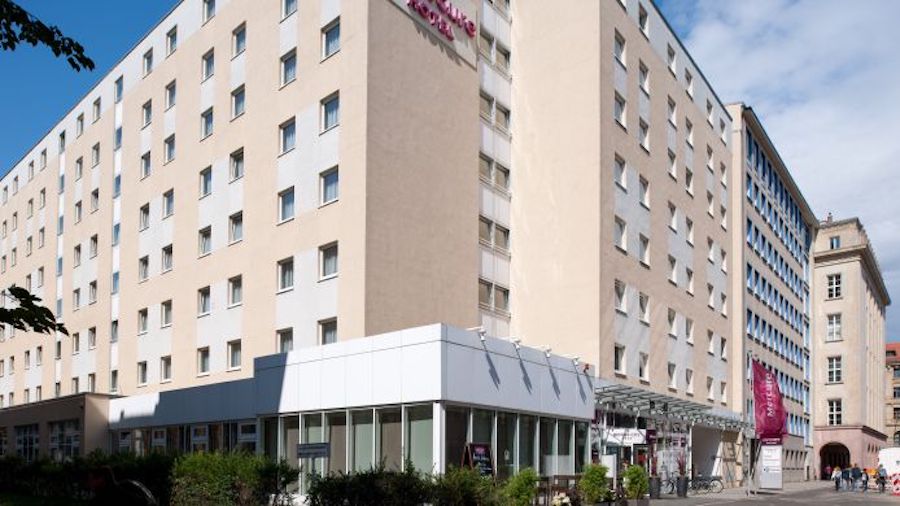
Home sweet home in the middle of Berlin at the Mercure Hotel Berlin City
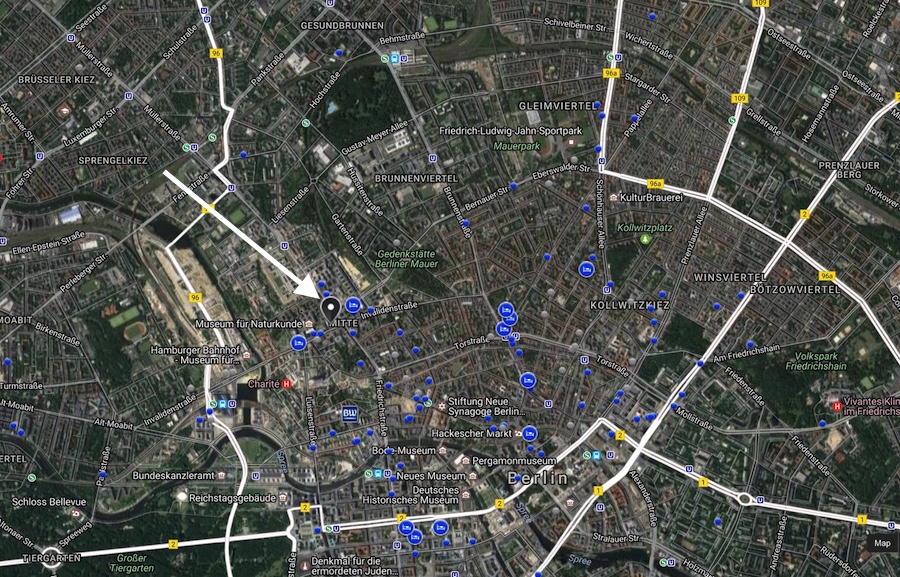
Walking distance to many of the sights
Did You Know? - The 4-star Mercure Hotel Berlin City is centrally located and ideal for tourists or business travelers. All 246 ECARF-certified rooms are suitable for allergy sufferers and have A/C and free WIFI. We have 6 air-conditioned conference rooms with up-to-date technology for your events.
Arrival: The main train station is just 0.6 miles (1 km) away. Tegel and Schönefeld airports are 5 miles (8 km) and 15.5 miles (25 km) away. It is 3.1 miles (5 km) from the A100 highway. The U-Bahn stops right at the hotel.
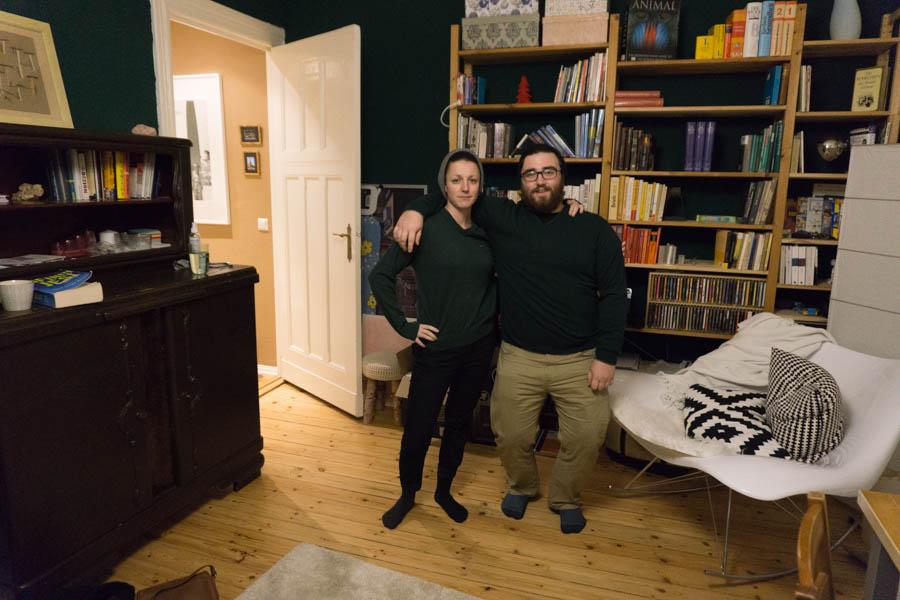
We have arrived...
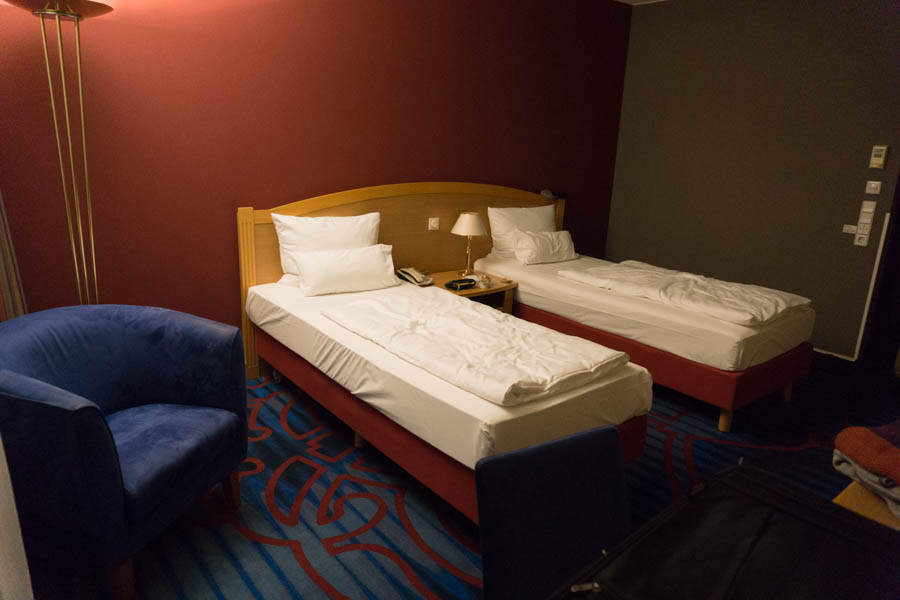
Time to crash!
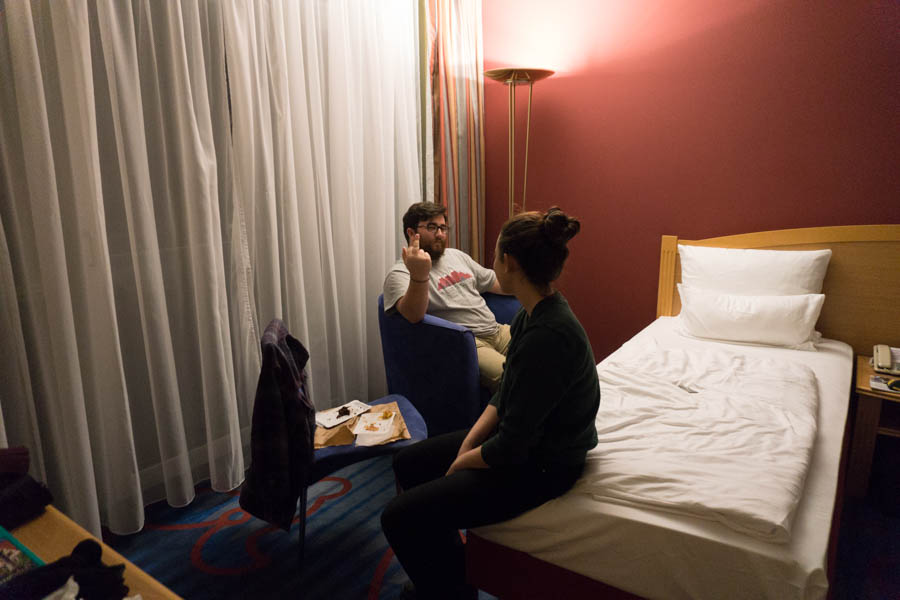
Welcome! You're Number One!
We Are Rested! Time To See The Sights 1/13/2017
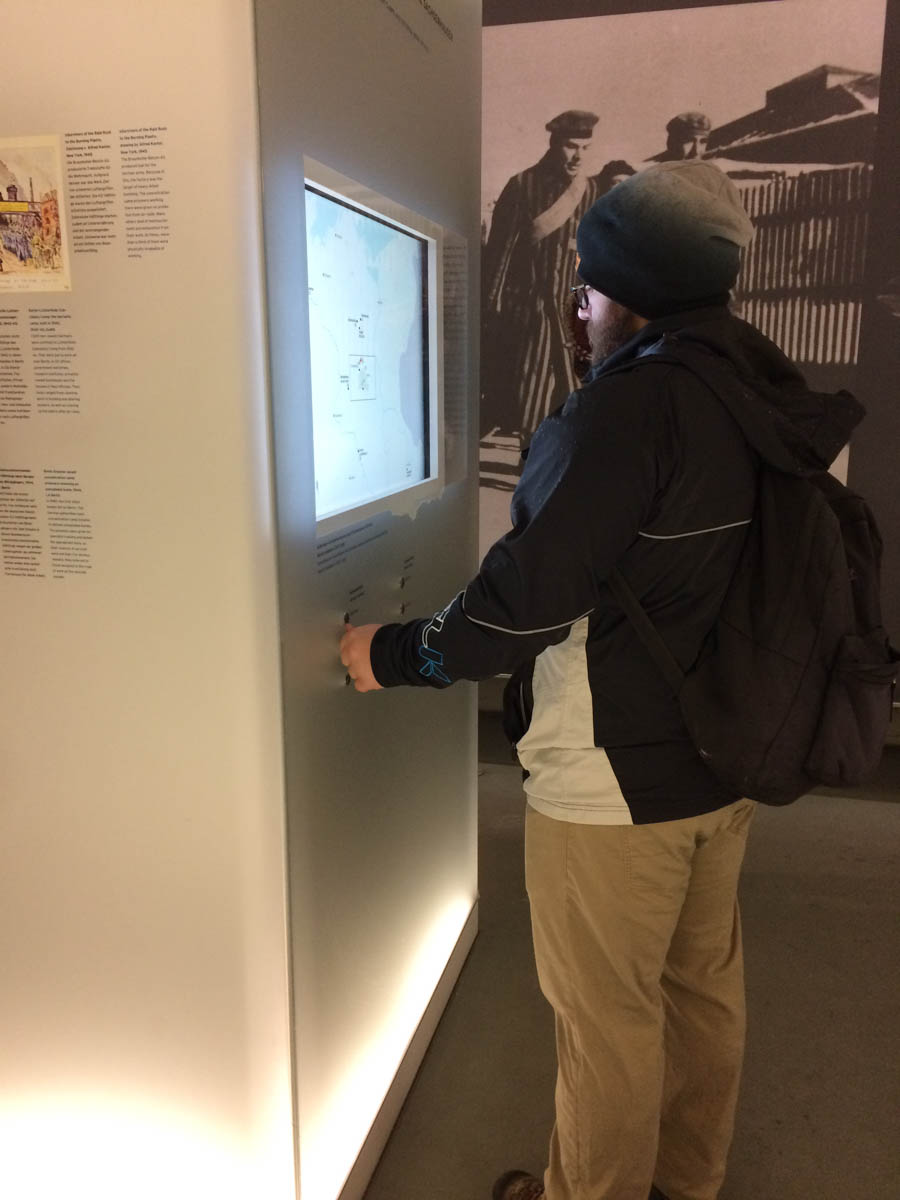
Sachsenhausen Concentration Camp 22 miles outside of Berlin
Did You Know? - The camp was established in 1936. It was located 35 kilometres (22 mi) north of Berlin, which gave it a primary position among the German concentration camps: the administrative centre of all concentration camps was located in Oranienburg, and Sachsenhausen became a training centre for Schutzstaffel (SS) officers (who would often be sent to oversee other camps afterwards). Executions took place at Sachsenhausen, especially of Soviet prisoners of war. During the earlier stages of the camp's existence the executions were done in a trench, either by shooting or by hanging.
Sachsenhausen was the site of Operation Bernhard, one of the largest currency counterfeiting operations ever recorded. The Germans forced inmate artisans to produce forged American and British currency, as part of a plan to undermine the British and United States' economies, courtesy of Sicherheitsdienst (SD) chief Reinhard Heydrich. Over one billion pounds in counterfeit banknotes were recovered.
It's Time To Eat
Did You Know? - Pork, beef, and poultry are the main varieties of meat consumed in Germany, pork being the most popular. Average annual meat consumption is 59 kg (130 lb).
Among poultry, chicken is most common, although duck, goose, and turkey are also consumed. Game meats, especially boar, hare, and venison are also widely available, especially in autumn and winter. Lamb and goat are less popular.
Meat is usually braised; pan-fried dishes also exist, but these recipes usually originate from France and Austria. Several cooking methods used to soften tough cuts have evolved into national specialties, including Sauerbraten (sour roast), involving marinating beef, horse meat or venison in a vinegar or wine vinegar mixture over several days.
A long tradition of sausage-making exists in Germany; more than 1500 different types of sausage (German: Wurst) are made. Most Wurst is made with natural casings of pork, sheep or lamb intestines. Among the most popular and most common are Bratwurst, usually made of ground pork and spices, the Wiener (Viennese), which may be pork or beef and is smoked and fully cooked in a water bath, and Blutwurst (blood sausage) or Schwarzwurst (black sausage) made from blood (often of pigs or geese).
Thousands of types of cold cuts also are available. There are many regional specialties, such as the Münchner Weißwurst (Munich white sausage) popular in Bavaria or the Currywurst (depending on region, either a steamed pork sausage or a version of the Bratwurst, sliced and spiced with curry ketchup) popular in the metropolitan areas of Berlin, Hamburg and the Ruhr Area.
Strict regulations governing what may and may not be put into them have been in force in Germany since the 13th century. In the market ordinance of Landshut in 1236, it was set down that only top-quality meat could be made into sausages
 |
Hungry? Papilles located near Karl-Marx-Straße. The exquisite new French-run cafe on Flughafenstrasse in Neukölln serves some of the softest, flakiest, most buttery croissants you'll find in town. You'll also find strawberry tarts, eclairs and macarons — all baked fresh in-house. And we haven't even gotten to the main menu: eggs Benedict and French toast in the morning; goat cheese salad, quiche and salmon burgers for lunch. Plus cheeses, wines, oysters and more Gallic goodness. There should be a special culinary visa for French people.
|
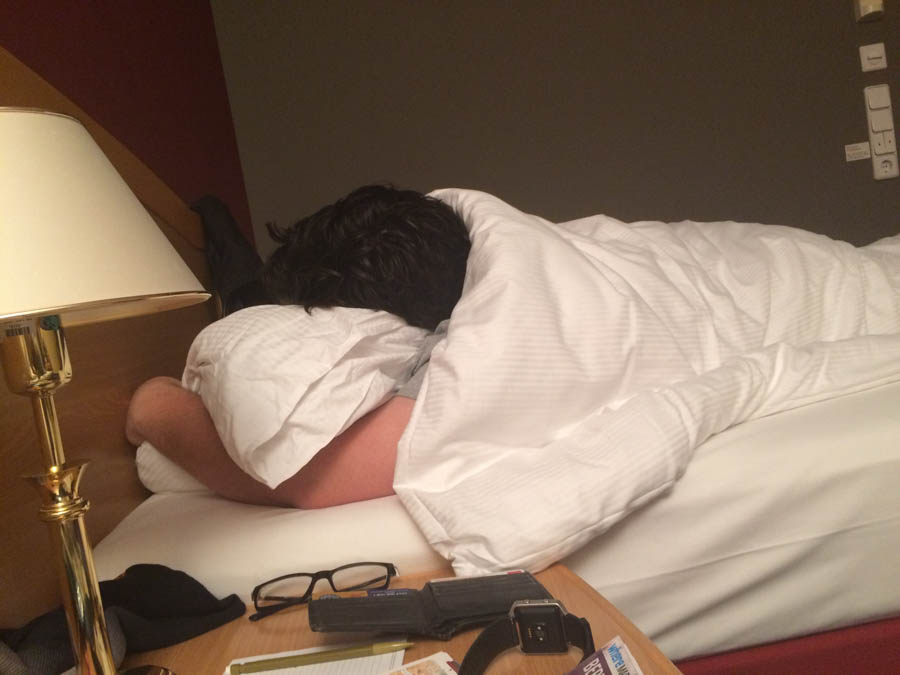
"Wake me up when it is over....."
1/15/2017 - Must Eat And See The Sights
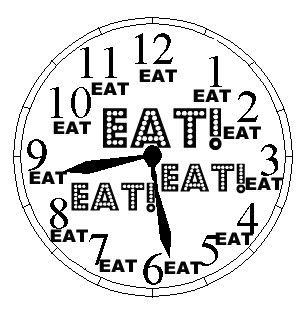

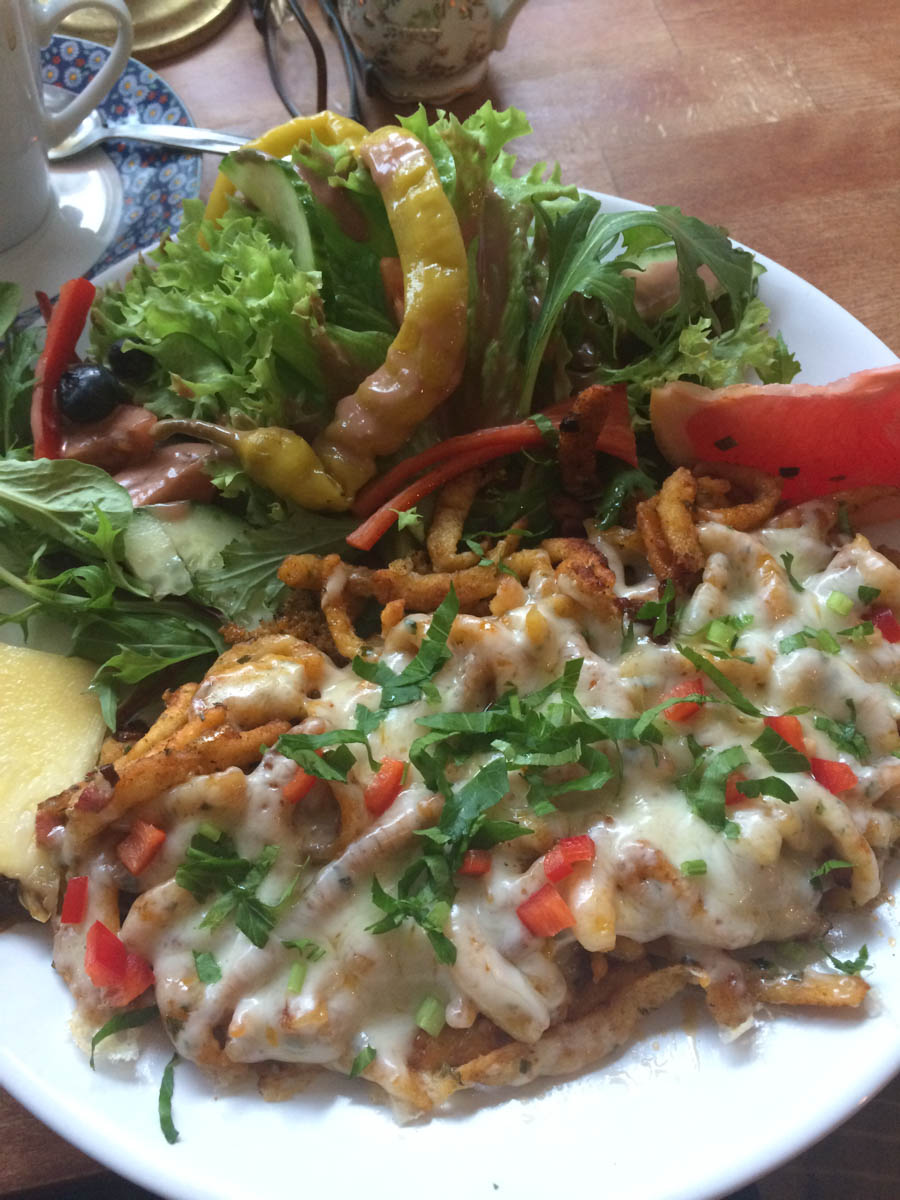
Get your veggies and cheese... Food for sightseeing!
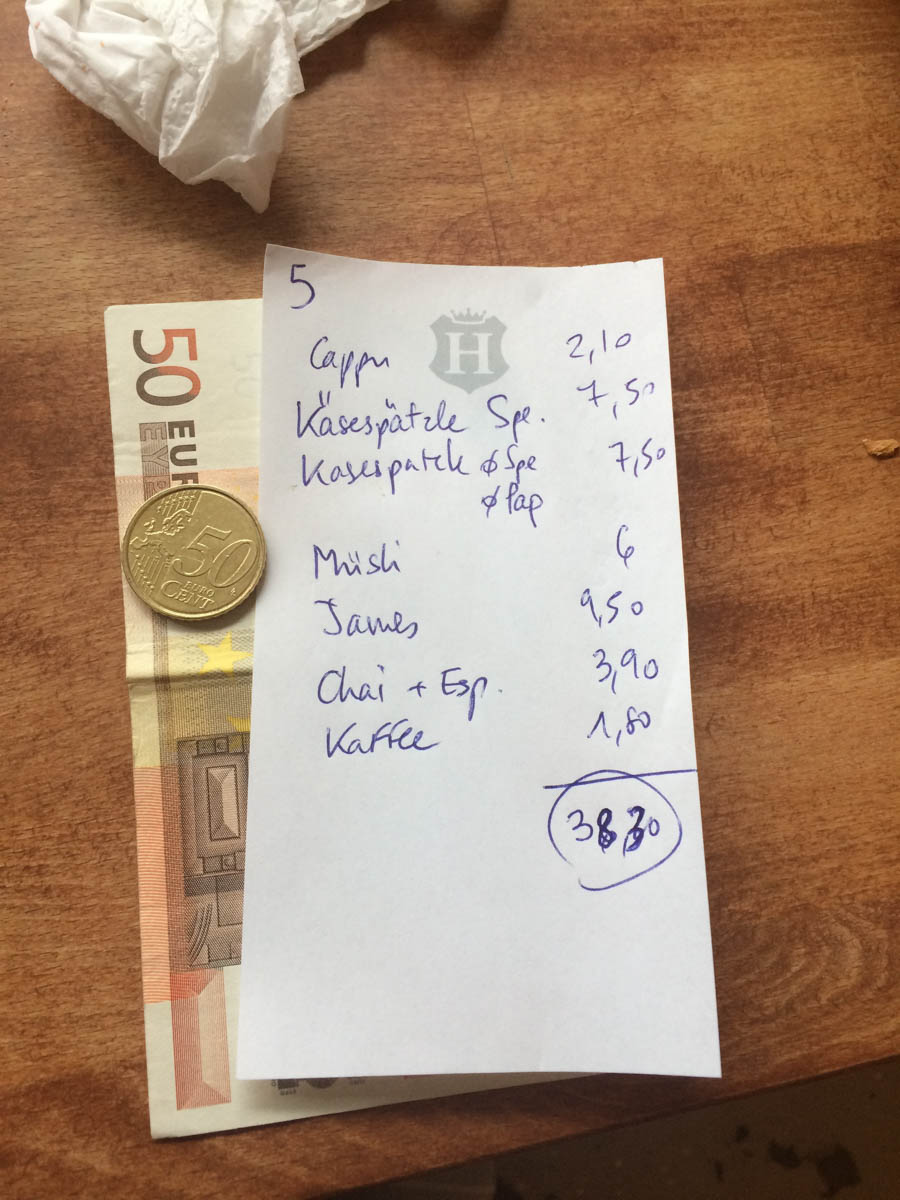
Looks like a deal!
Time For A Walk To The DDR Museum, About 20 Minutes

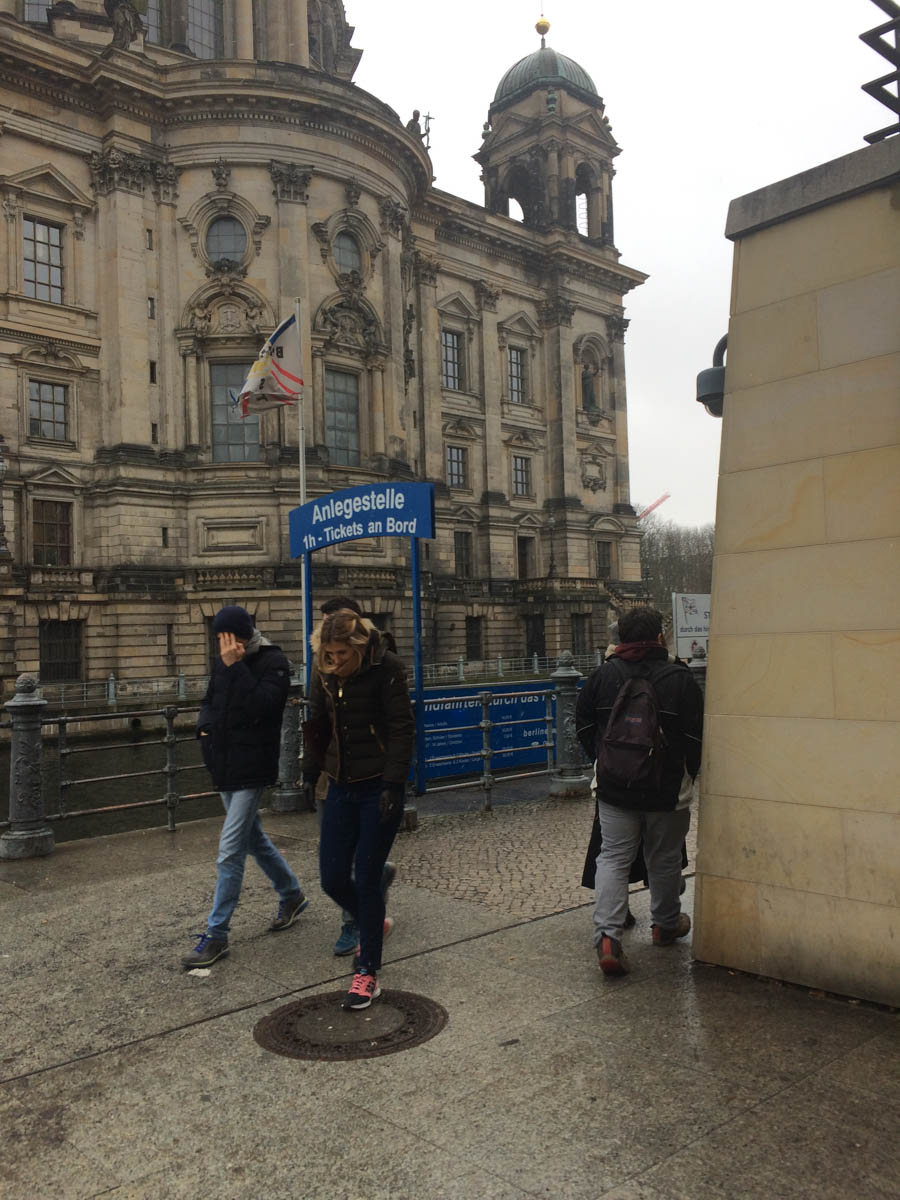
A tad cool out today but it is, afterall, winter in Germany
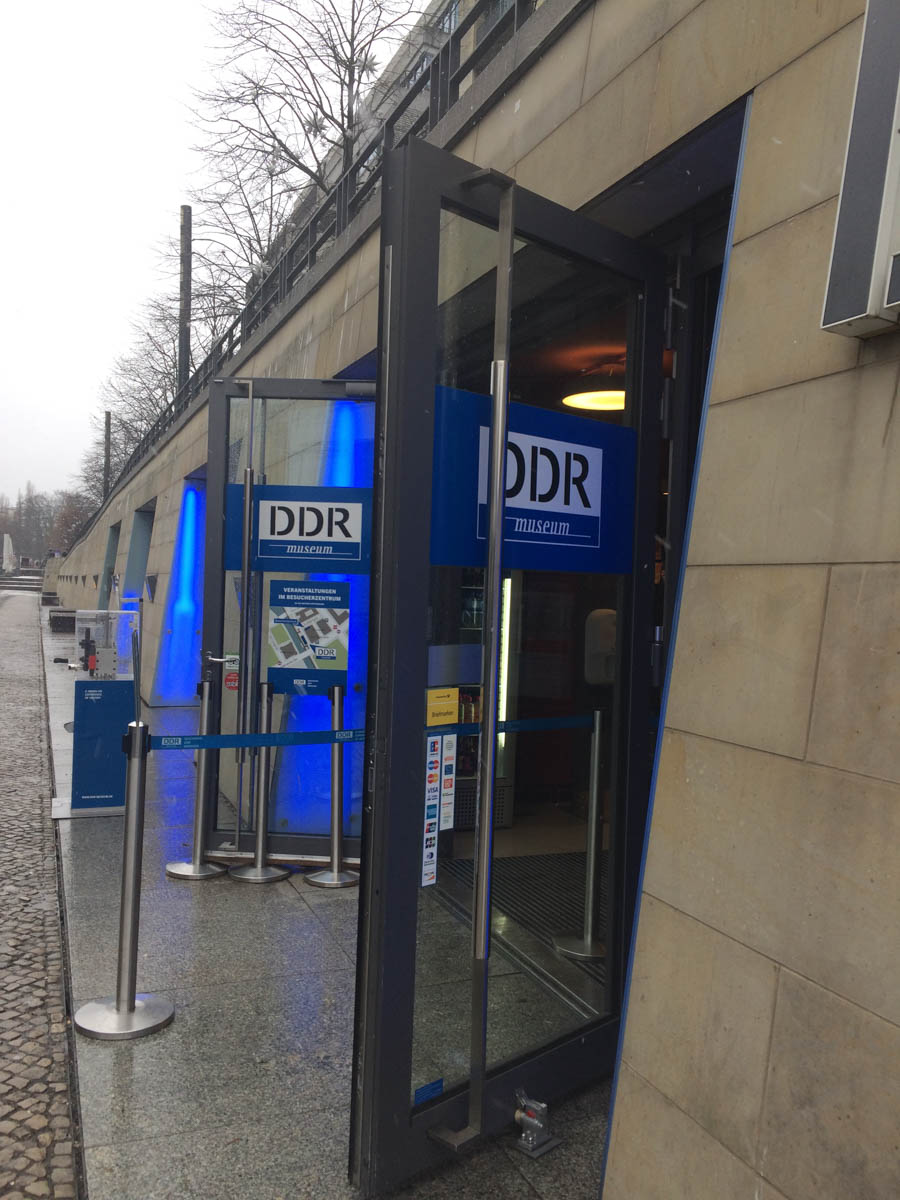
DDR is a popular museum (
Website
)
Did You Know? - The DDR Museum is Berlin's interactive museum and one of the most-visited attractions in the German capital. History comes dynamically alive as the visitor is given a first-hand introduction to life in the first Socialist state on German soil. See, touch, feel and experience the actual conditions of a long-defunct system. Unique artefacts, futuristic technology and a prize-winning design transform a museum visit into a great journey back in time.
The DDR Museum is a museum in the centre of Berlin. The museum is located in the former governmental district of East Germany, right on the river Spree, opposite the Berlin Cathedral. The museum is the 11th most visited museum in Berlin.
Its exhibition shows the daily life in East Germany (known in German as the Deutsche Demokratische Republik or DDR) in a direct "hands-on" way. For example, a covert listening device ("bug") gives visitors the sense of being "under surveillance".

DDR is located across from the Berliner Dome
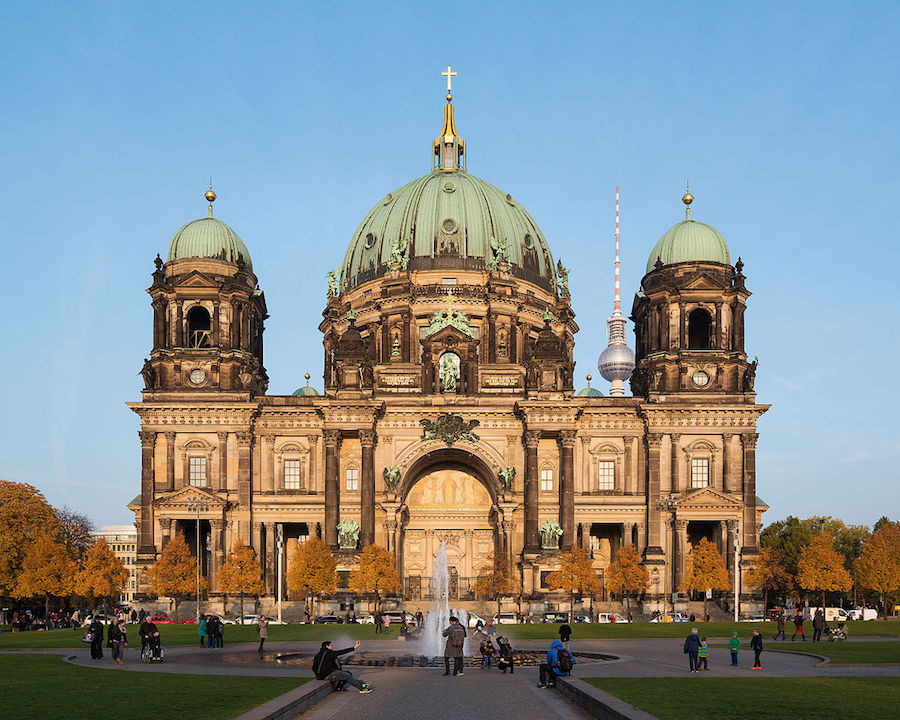
Beautiful golden color in the good ol summer time
Did You Know? - Berlin Cathedral (German: Berliner Dom) is the short name for the Evangelical Supreme Parish and Collegiate Church (German: Oberpfarr- und Domkirche zu Berlin) in Berlin, Germany. It is located on Museum Island in the Mitte borough. The current building was finished in 1905 and is a main work of Historicist architecture of the "Kaiserzeit".
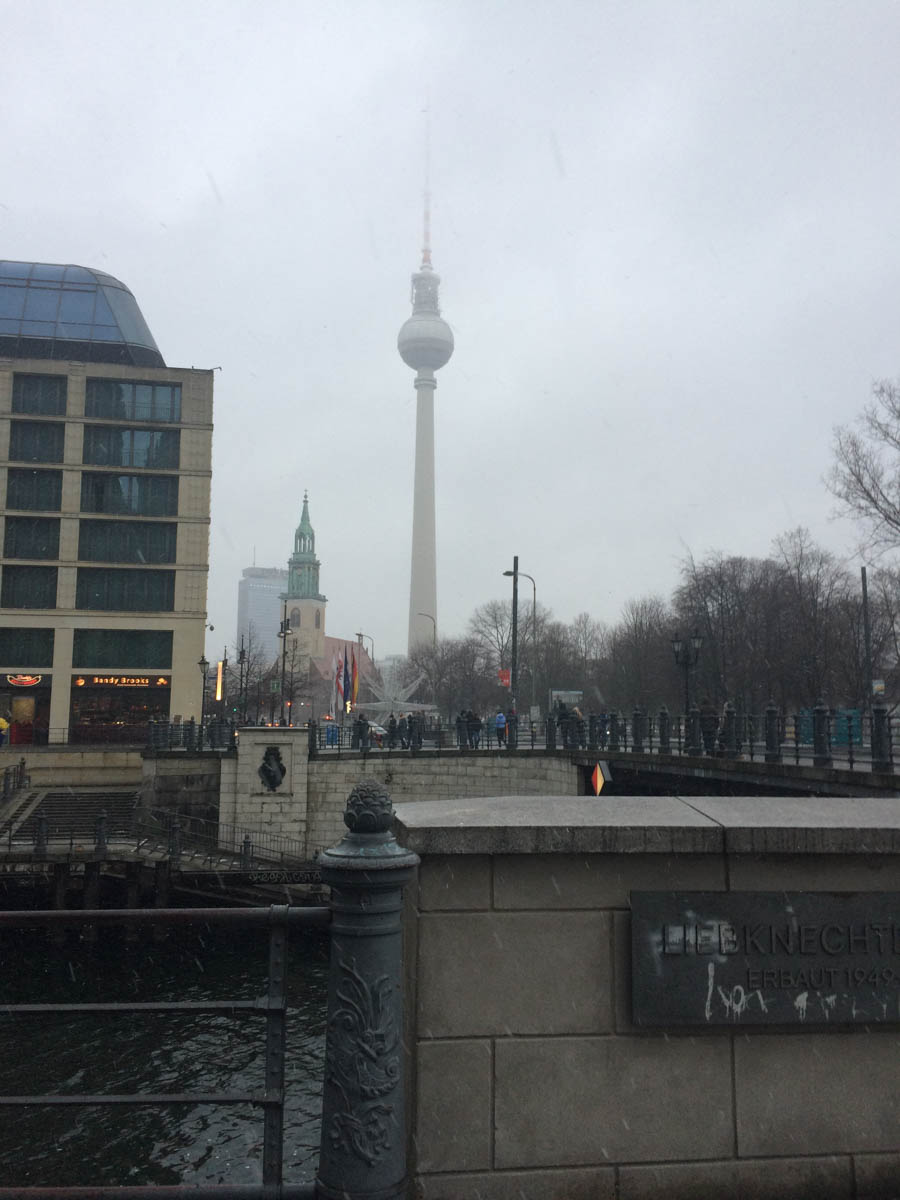
Must see St. Mary's... Just down the street... The spire in the
background is the 1200' tall TV tower servicing Berlin

Taking the bus is simple
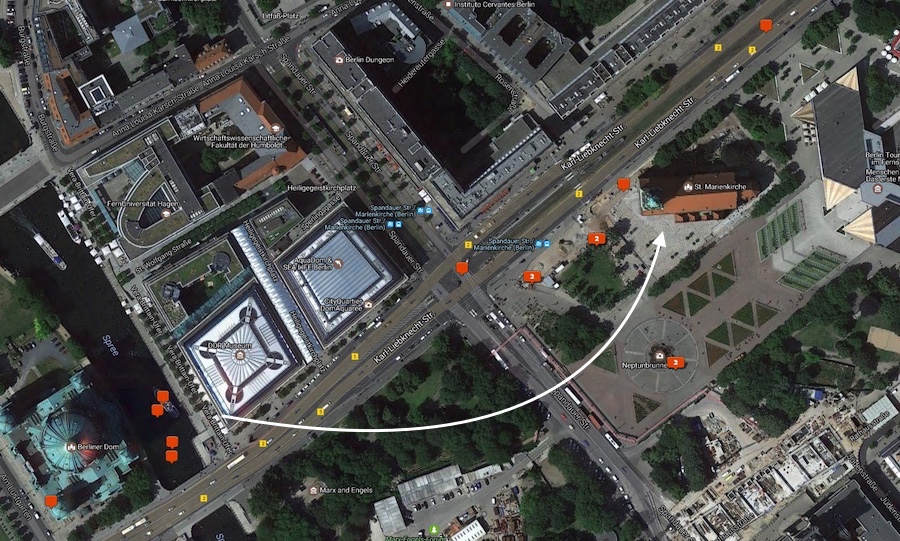
Taking the bus right down the street to
St. Mary's Church

Looks different with no snow and sunshine
Did You Know? - St. Mary's Church, known in German as the Marienkirche, is a church in Berlin, Germany. It is located on Karl-Liebknecht-Straße (formerly Kaiser-Wilhelm-Straße) in central Berlin, near Alexanderplatz. The exact age of the original church site and structure is not precisely known, but it was first mentioned in German chronicles in 1292.
It is presumed to date from earlier in the 13th century. The architecture of the building is now largely composed of comparatively modern restoration work which took place in the late 19th century and in the post-war period. The church was originally a Roman Catholic church, but has been a Lutheran Protestant church since the Protestant Reformation.
The Berlin Wall Was Here
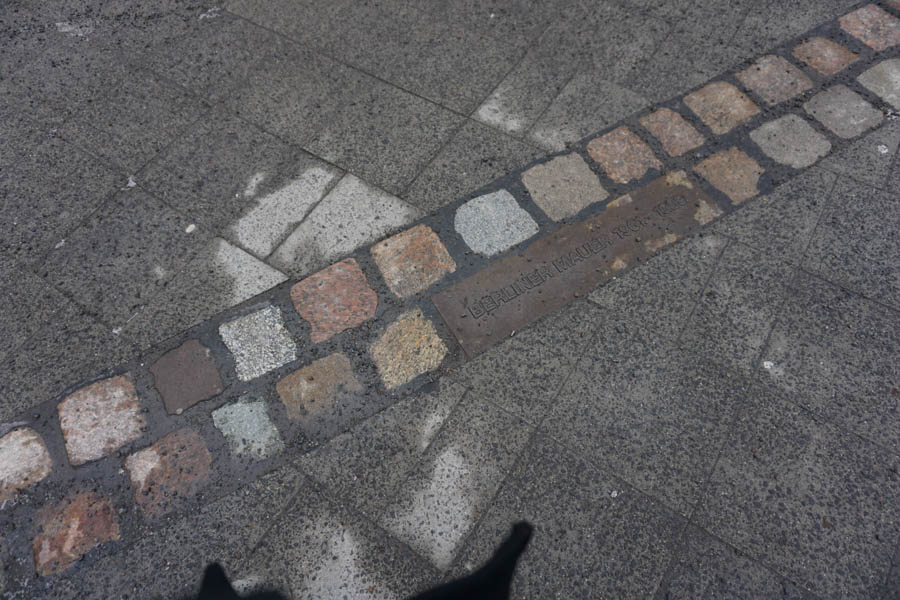
Marked carefully so people can remember (Berliner Mauer)
Did You Know? - The Berlin Wall (German: Berliner Mauer) was a barrier that divided Berlin from 1961 to 1989. Constructed by the German Democratic Republic (GDR, East Germany), starting on 13 August 1961, the Wall completely cut off (by land) West Berlin from surrounding East Germany and from East Berlin until government officials opened it in November 1989.
Its demolition officially began on 13 June 1990 and was completed in 1992.
The barrier included guard towers placed along large concrete walls, which circumscribed a wide area (later known as the "death strip") that contained anti-vehicle trenches, "fakir beds" and other defenses.
The Eastern Bloc claimed that the Wall was erected to protect its population from fascist elements conspiring to prevent the "will of the people" in building a socialist state in East Germany. In practice, the Wall served to prevent the massive emigration and defection that had marked East Germany and the communist Eastern Bloc during the post-World War II period.

An Email Message From "Bad Mike" Andersen & Bridgette After Seeing Cyndy's Travelog To Germany....
"Wow... I showed this to Brigitte. A lot of emotional history there for her. I guess 3 of her siblings got caught on the East side of the wall and Brigitte and 2 other Brothers made it to the west before the wall closed for good.Interestingly the 2 sisters and a brother that stayed in the East fell for the brainwashing except the brother who escaped on a motor cycle breaking thru the barrier just before they were going to arrest him in the East. The 2 sisters stayed until the wall fell. Interestingly their children (Brigitte's Nephews) came to visit her after the wall fell and she had to finally kick them out of her house and life, because they thought they were entitled to everything Brigitte had worked so hard for ... without working for it. Just give me this and give me that... She told them to get a job and work for what they want like she did... Sad side effect of socialism... most of the people lose their sense of personal responsibility and ambition.
Brigitte used to smuggle money and sausages to her relatives in the East... there by risking her life and their life when she was 14 yrs old to 24 yrs. old. It still made no difference to their attitude of give me give me when the wall fell... years of no ambition...
Packages sent by mail were confiscated by the government so you had to smuggle to get things to the people who still then till now feel entitled to whatever you can and should give them.... Interesting.
Bad Mike"
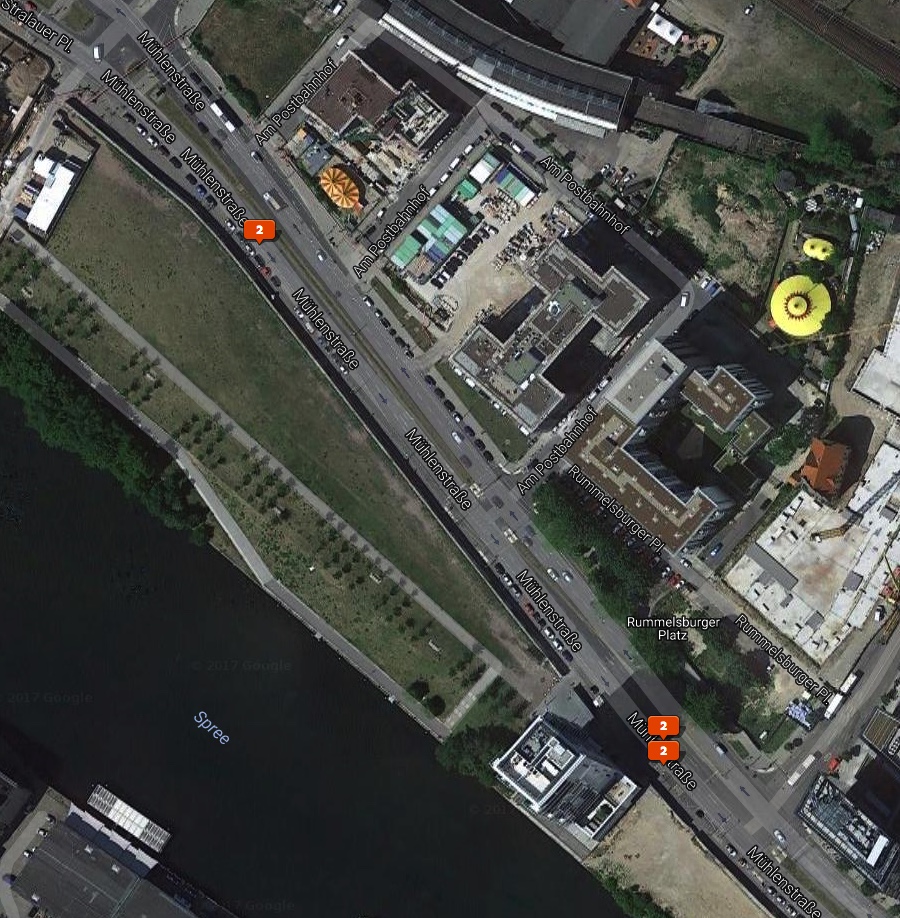
The orange boxes represent where the next three pictures were taken
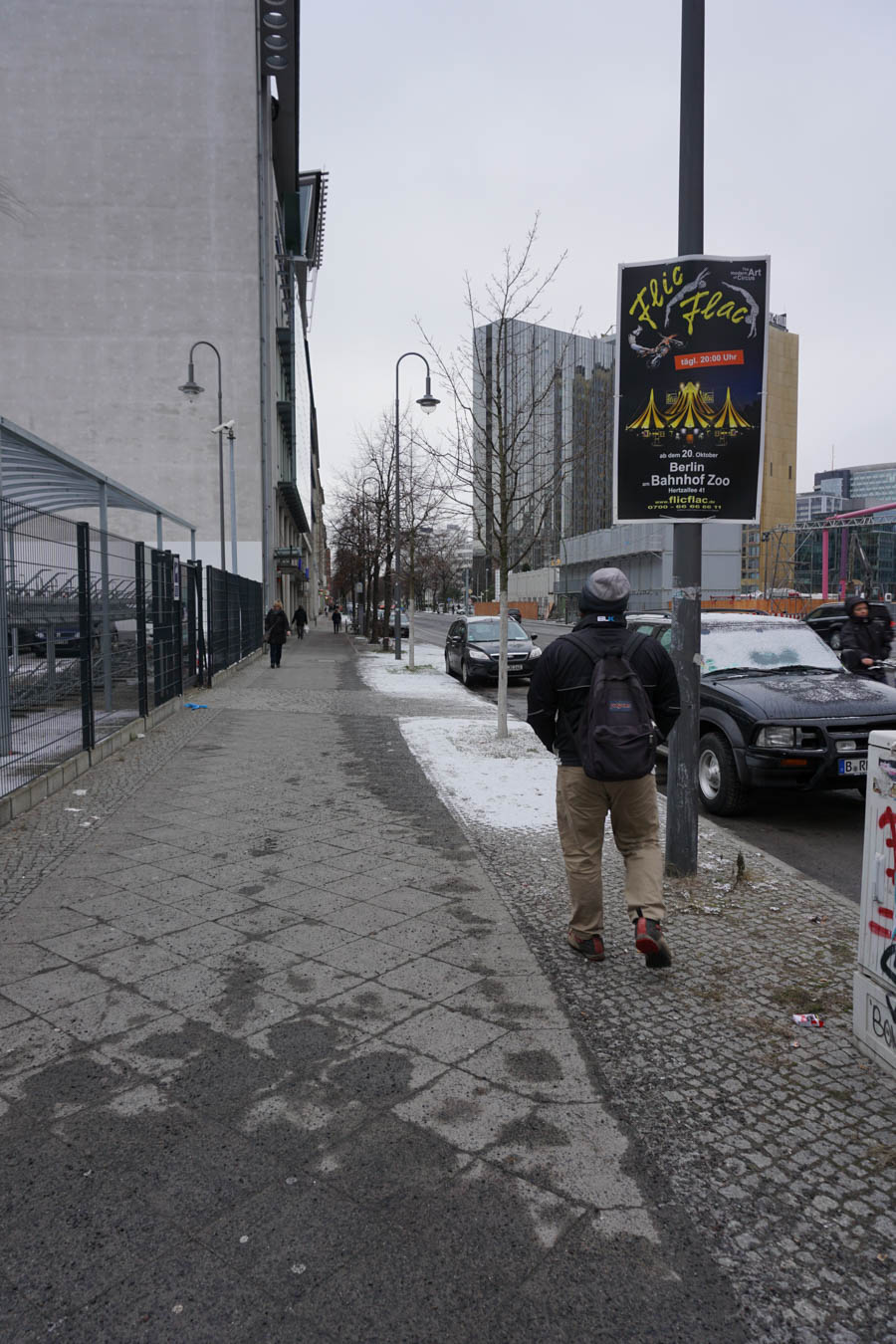
Bleak wintertime
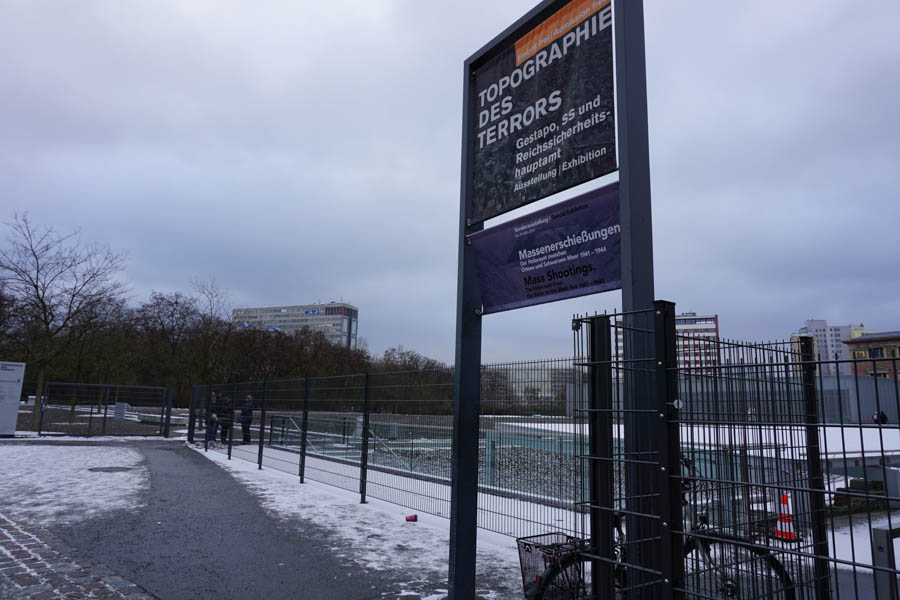
Amazing view back into history

The wall tore the town into pieces
Topography of Terror
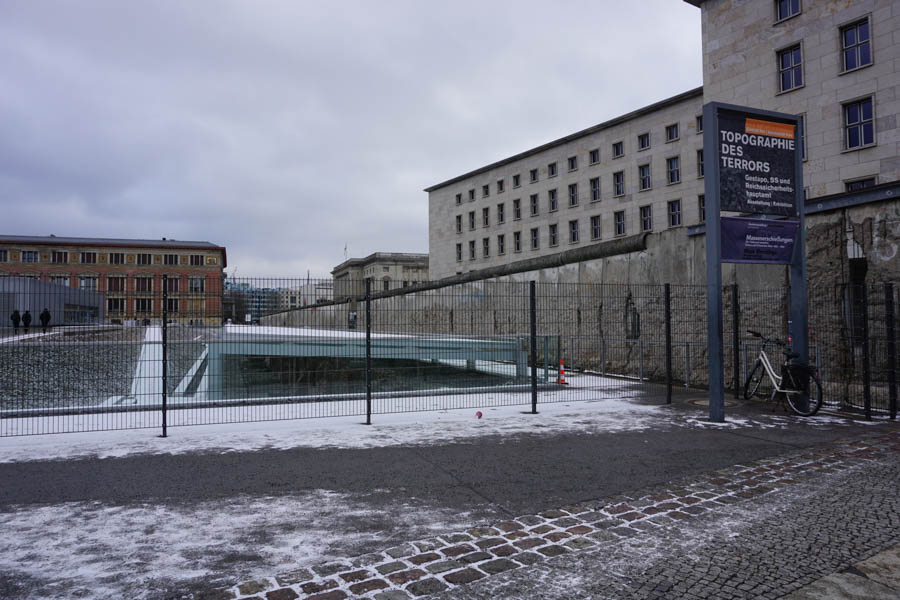
During the "Third Reich" the headquarters of the Secret State Police, the SS and the Reich Security Main Office were located at the site.
Did You Know? - The Topography of Terror (German: Topographie des Terrors) is an outdoor and indoor history museum in Berlin, Germany. It is located on Niederkirchnerstrasse, formerly Prinz-Albrecht-Strasse, on the site of buildings which during the Nazi regime from 1933 to 1945 were the headquarters of the Gestapo and the SS, the principal instruments of repression during the Nazi era.
The buildings that housed the Gestapo and SS headquarters were largely destroyed by Allied bombing during early 1945 and the ruins demolished after the war. The boundary between the American and Soviet zones of occupation in Berlin ran along the Prinz-Albrecht-Strasse, so the street soon became a fortified boundary, and the Berlin Wall ran along the south side of the street, renamed Niederkirchnerstrasse, from 1961 to 1989.
The wall here was never demolished. Indeed, the section adjacent to the Topography of Terror site is the longest extant segment of the outer wall (the longer East Side Gallery section in Friedrichshain being actually part of the inner wall not visible from West Berlin).
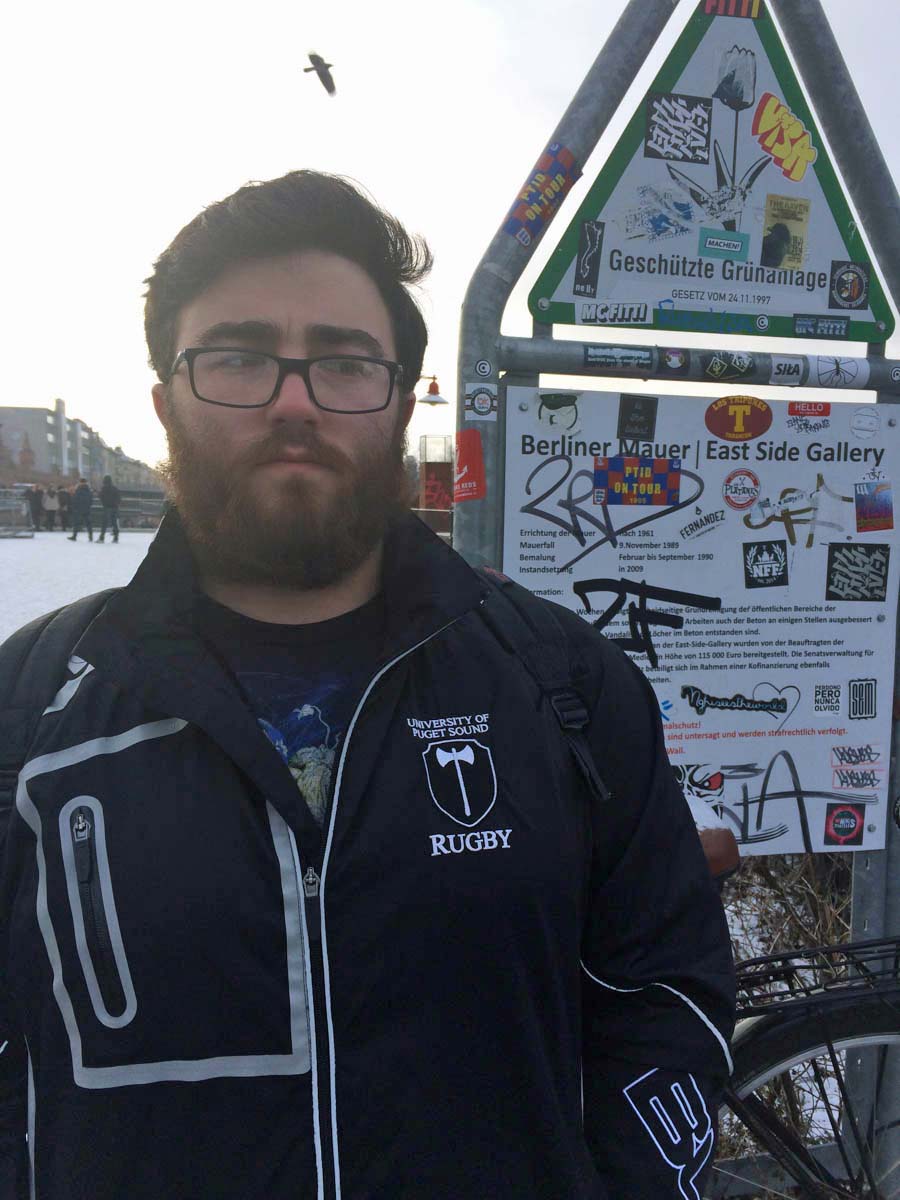
Standing where the wall used to exist
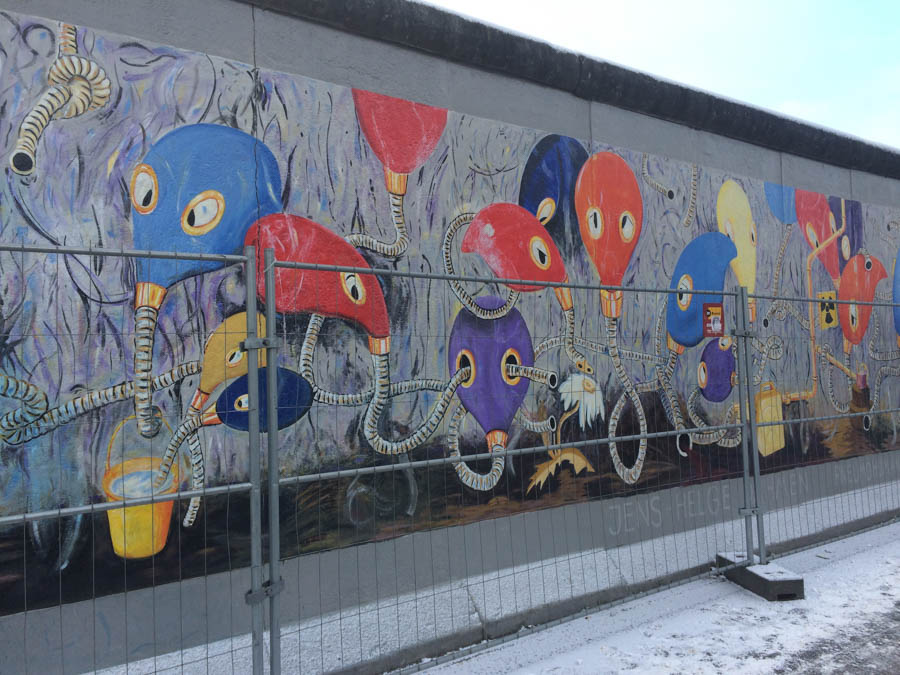
"Art work" exists along the remnents of the wall these days
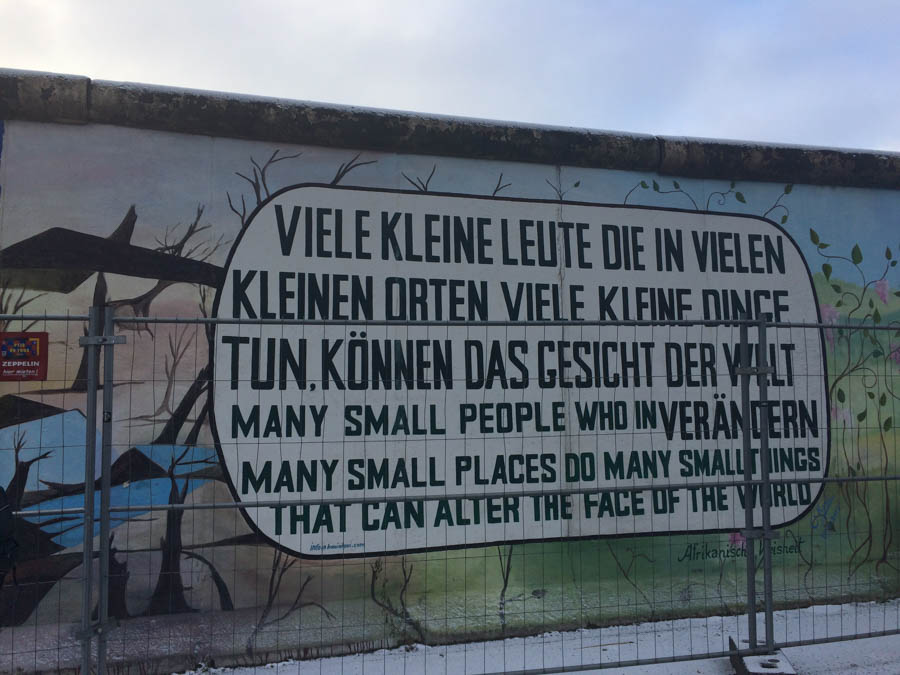
Some of the "artwork" is not for a kid friendly website

The wall goes on for a long distance
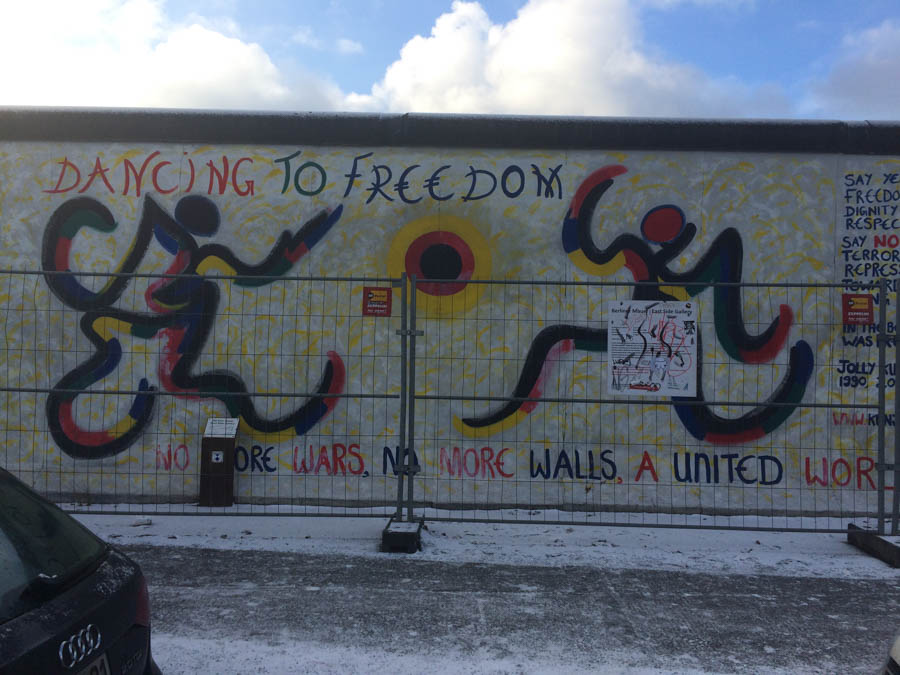
Creativity indeed

Time for a bite at the Elephant Restaurant
(
website
)
Fuggerstraße 18, 10777 Berlin, Germany
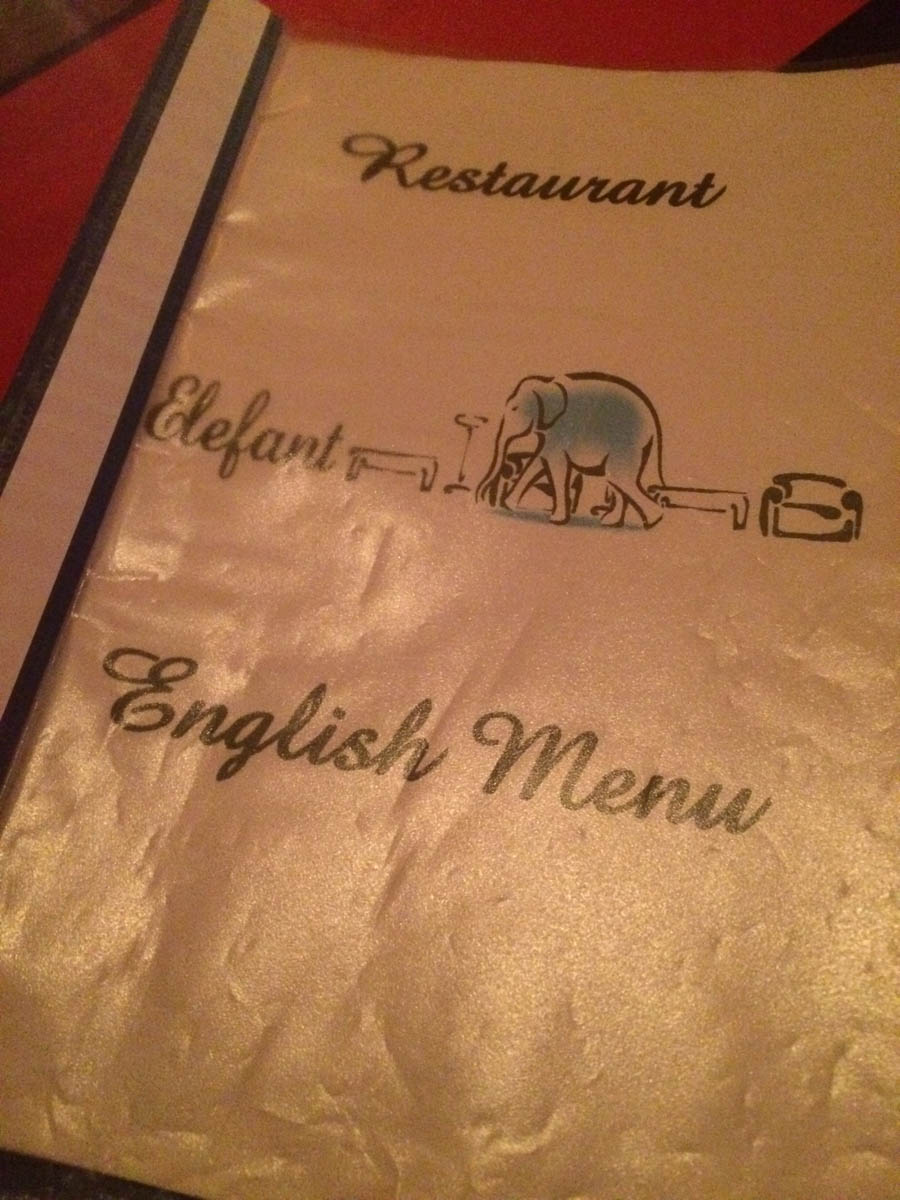
Ah... We can make a selection!
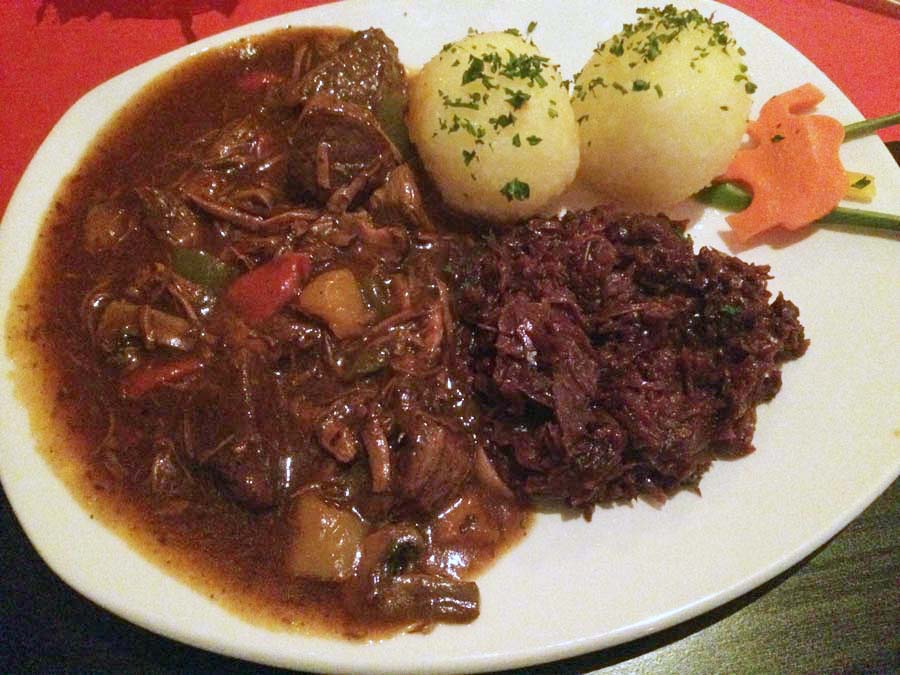
Looks pretty good

Harper gives it a go
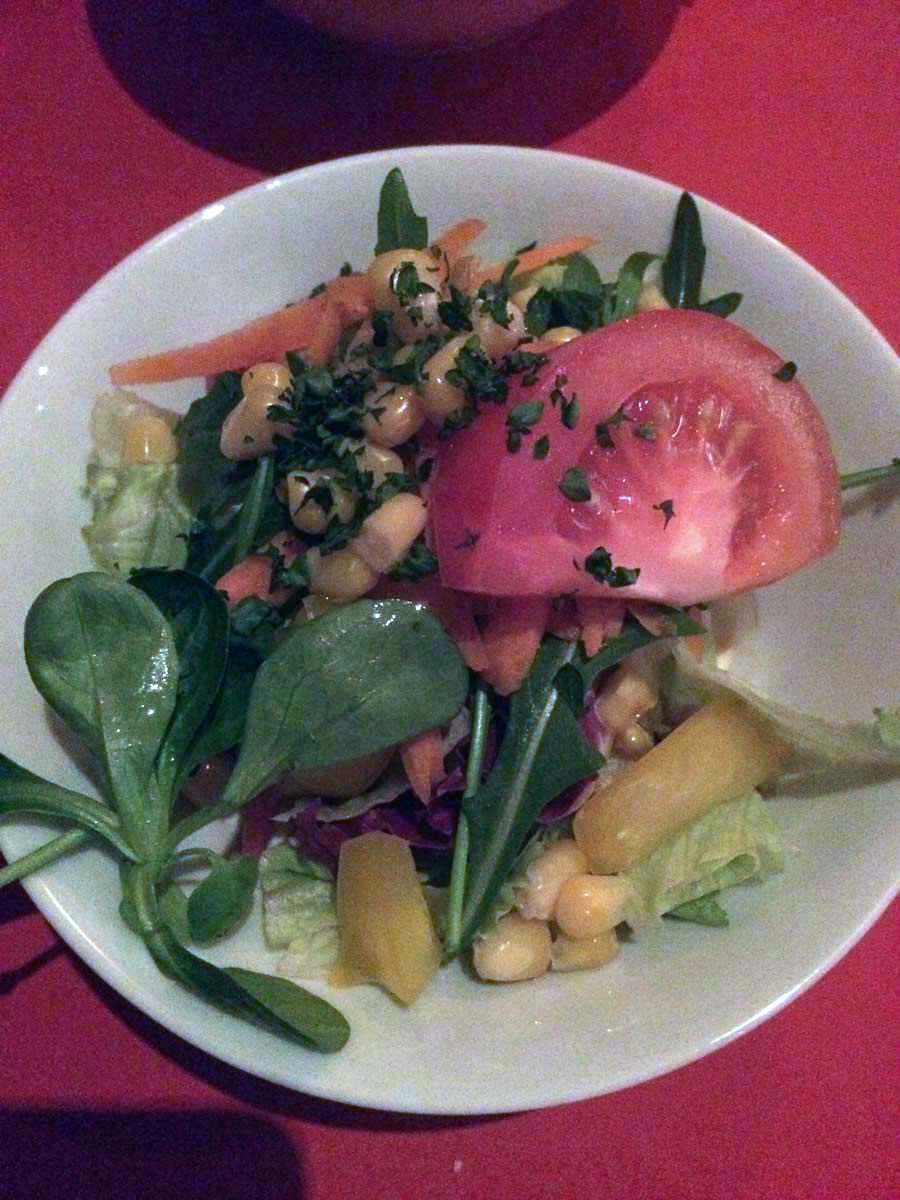
1/17/2017 And We Are Off Again! First Stop, Reichstag Building
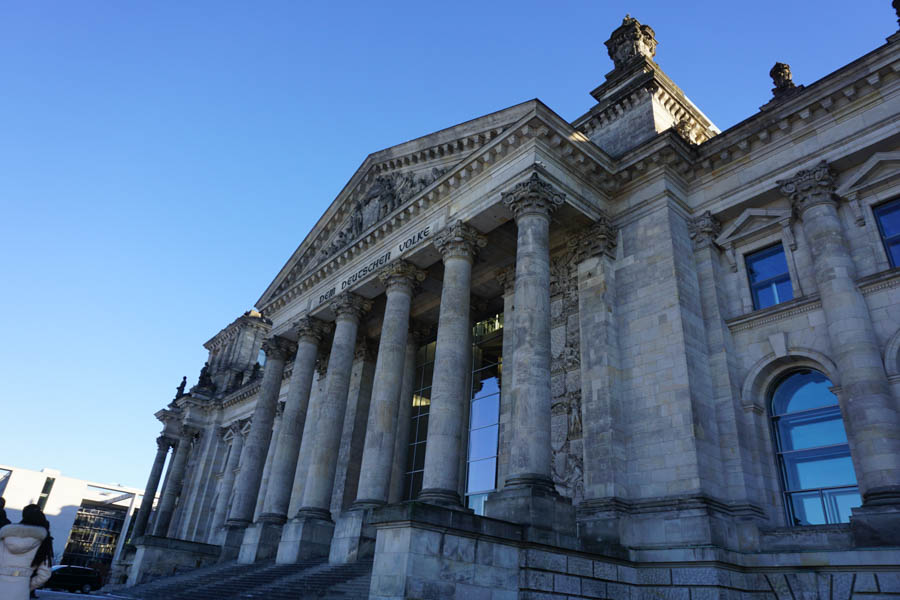
The Reichstag Building is imposing even today
Did You Know? - The Reichstag building is a historical edifice in Berlin, Germany, constructed to house the Imperial Diet (German: Reichstag), of the German Empire. It was opened in 1894 and housed the Diet until 1933, when it was severely damaged after it was set on fire. After World War II, the building fell into disuse; the parliament of the German Democratic Republic (the Volkskammer) met in the Palast der Republik in East Berlin, while the parliament of the Federal Republic of Germany (the Bundestag) met in the Bundeshaus in Bonn.
The ruined building was made safe against the elements and partially refurbished in the 1960s, but no attempt at full restoration was made until after German reunification on 3 October 1990, when it underwent a reconstruction led by architect Norman Foster. After its completion in 1999, it once again became the meeting place of the German parliament: the modern Bundestag.

Major restoration shows on the inside

It did not look so good after the allied bombing in 1945
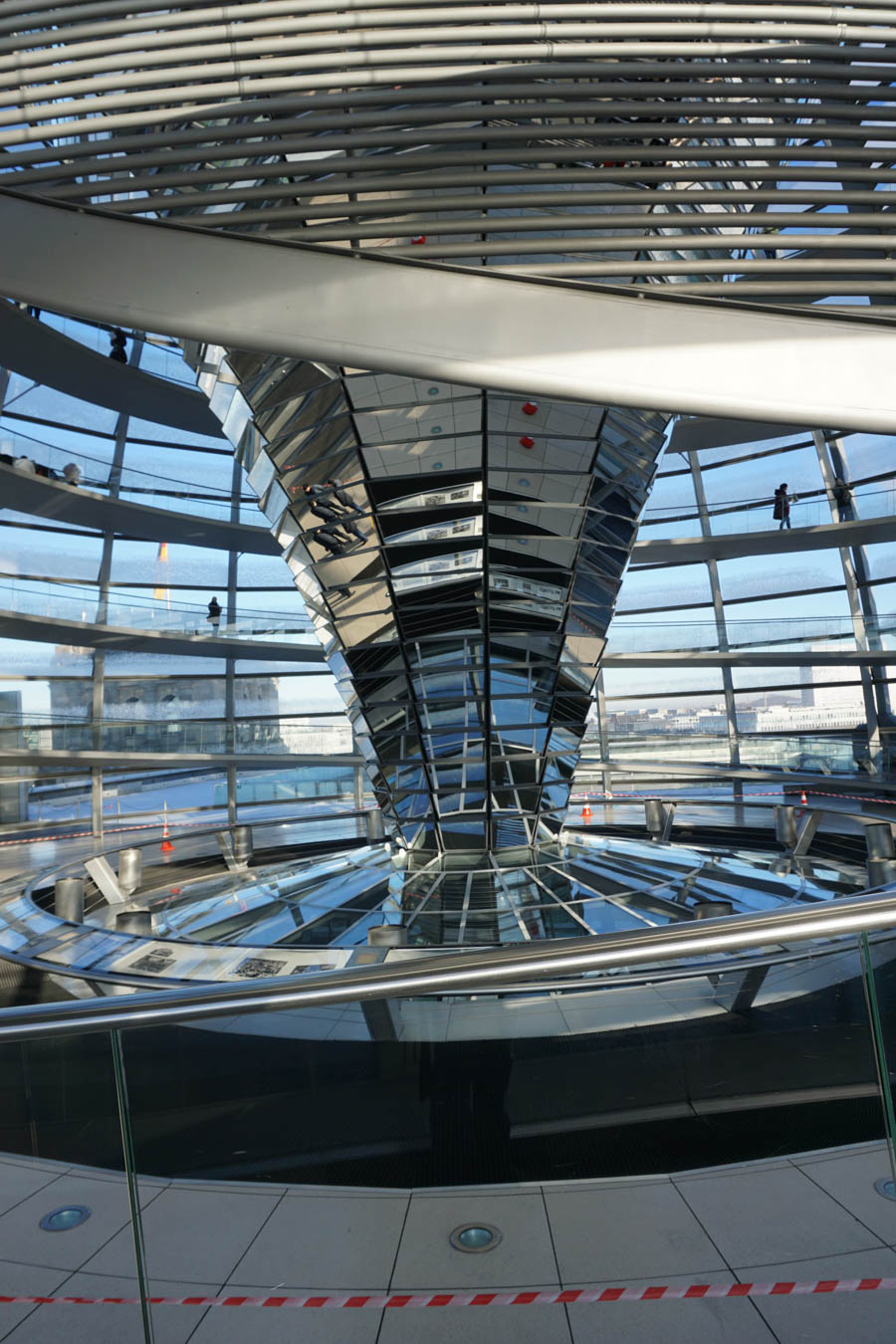
Inside the new glass dome gives a view of the surroundings
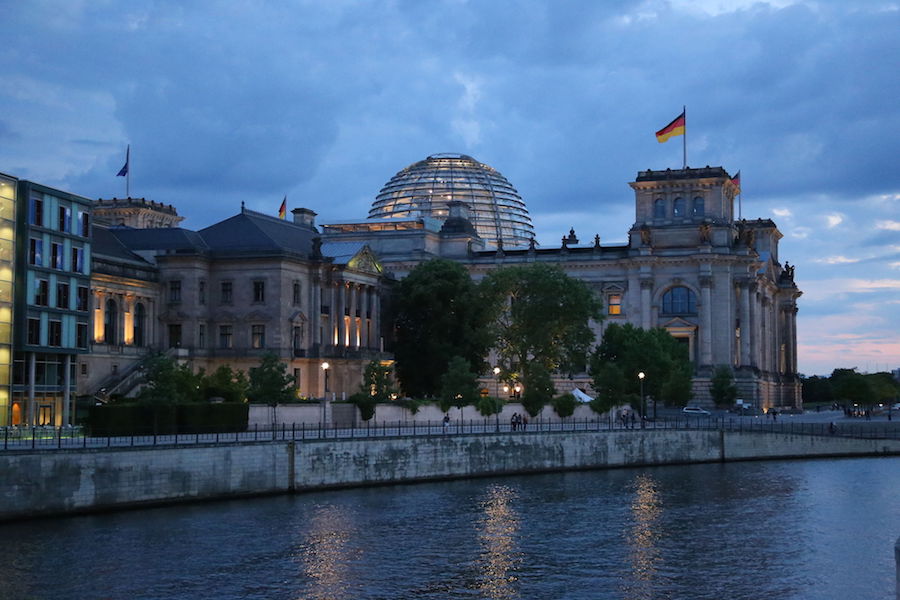
The glass dome is clearly viewed from the water
Did You Know? - The large glass dome at the very top of the Reichstag has a 360-degree view of the surrounding Berlin cityscape. The main hall (debating chamber) of the parliament below can also be seen from inside the dome, and natural light from above radiates down to the parliament floor.
A large sun shield tracks the movement of the sun electronically and blocks direct sunlight which would not only cause large solar gain, but dazzle those below. Construction work was finished in 1999 and the seat of parliament was transferred to the Bundestag in April of that year. The dome is open to visitors by prior registration.

It's an amazing view from the dome
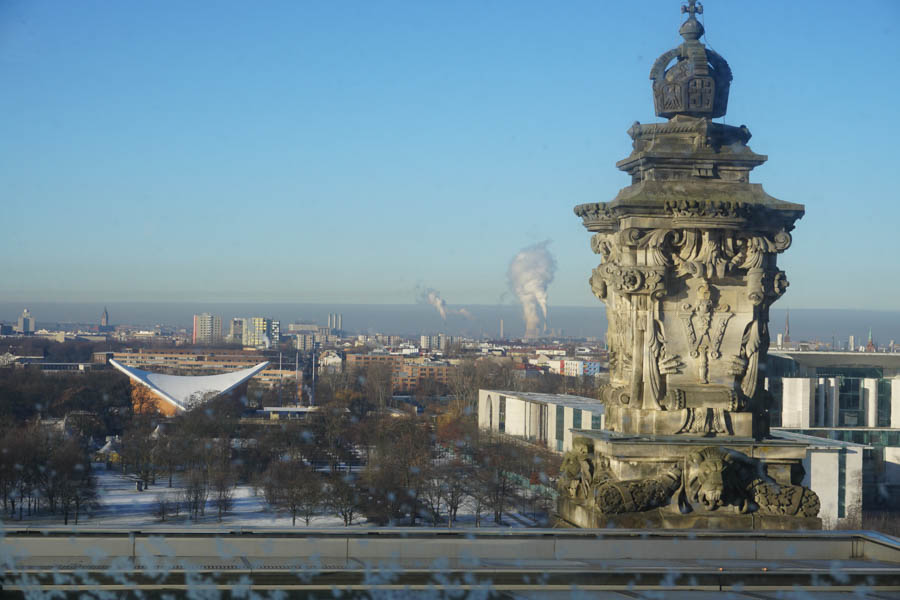
360 degree view of the city
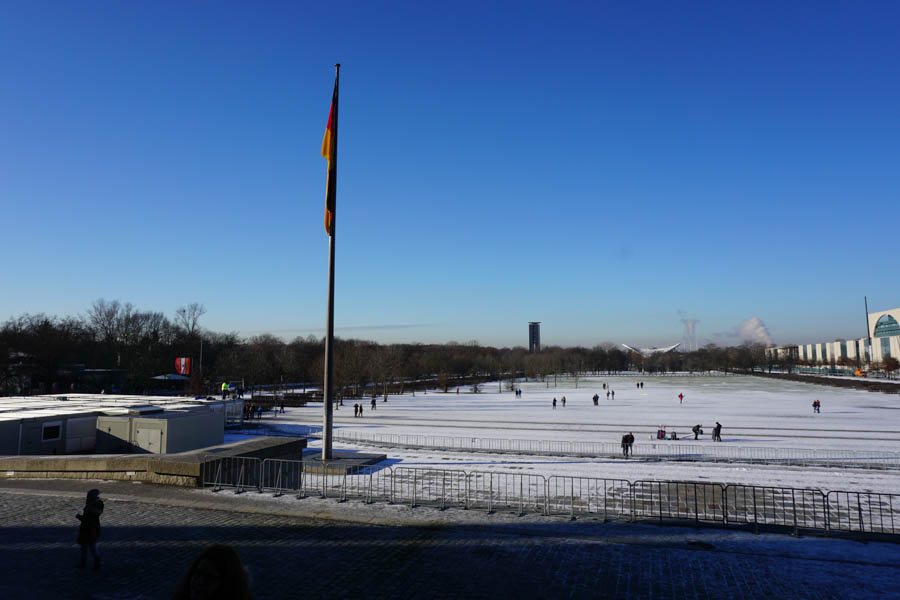
The frozen area is green during the summer
(See aerial photo below)
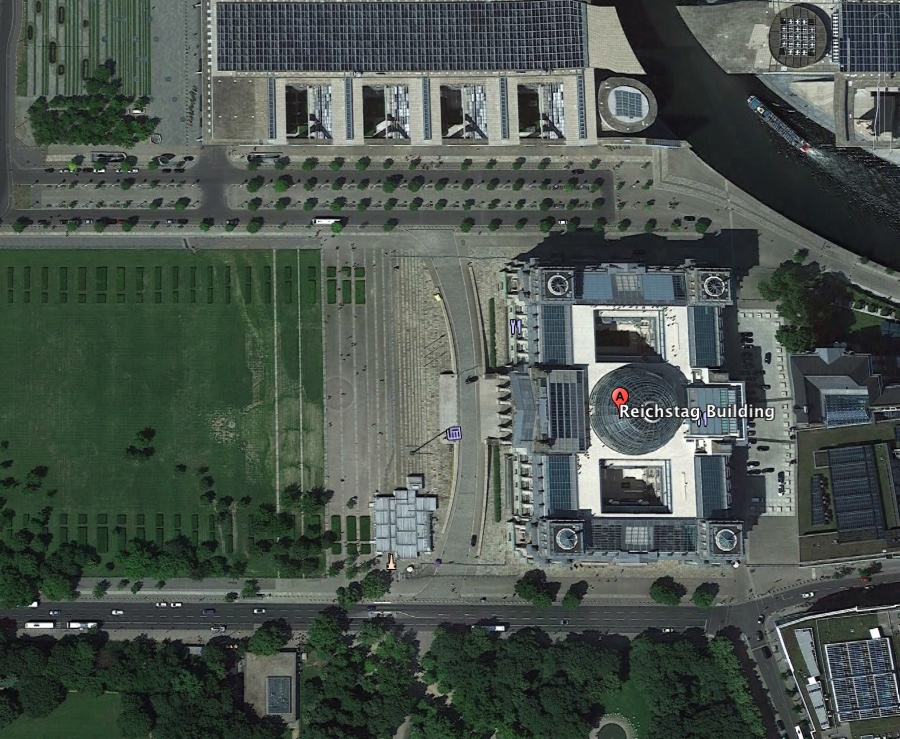
The building is quite large and the dome is clearly visible
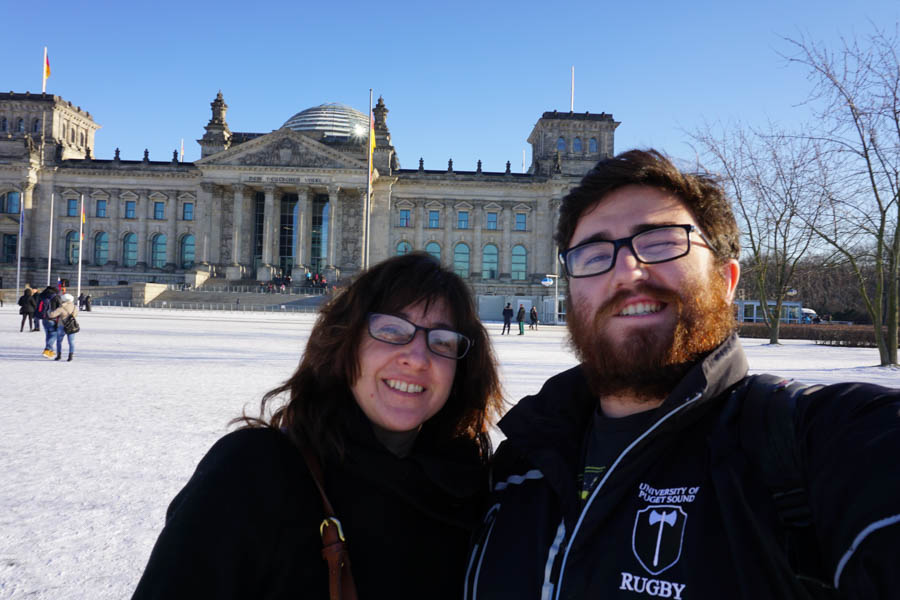
"We are here!"
Short Walk To The Pariser Platz

Just a short walk to Pariser Platz and the Brandenburg Gate
Did You Know? - Pariser Platz is the square immediately behind the Brandenburg Gate when approaching the centre of Berlin from the Tiergarten in the west. The neo-classical Brandenburg Gate was completed in the early 1790s by Carl Gotthard Langhans. Until 1814 the square was known simply as Quarré or Viereck (the Square).
In March 1814, when Prussian troops along with the other Allies captured Paris after the overthrow of Napoleon, it was renamed Pariser Platz to mark this triumph.
The Brandenburg Gate was the main gate in the western side of the Customs Wall that surrounded the city in the eighteenth century, and the Pariser Platz is at the west end of the avenue of Unter den Linden, the ceremonial axis of the city, down which the victorious troops of all regimes from the Hohenzollerns to the German Democratic Republic have marched in triumph.
Before World War II, Pariser Platz was the grandest square in Berlin, flanked by the American and French embassies, the finest hotel (the Adlon Hotel), the Academy of the Arts, and several blocks of apartments and offices.
During the last years of World War II, all of the buildings around the square were turned to rubble by air raids and heavy artillery bombardment. The only structure left standing in the ruins of Pariser Platz was the Brandenburg Gate, which was restored by the East Berlin and West Berlin governments. After the war and especially with the construction of the Berlin Wall, the square was laid waste and became part of the death zone dividing the city.
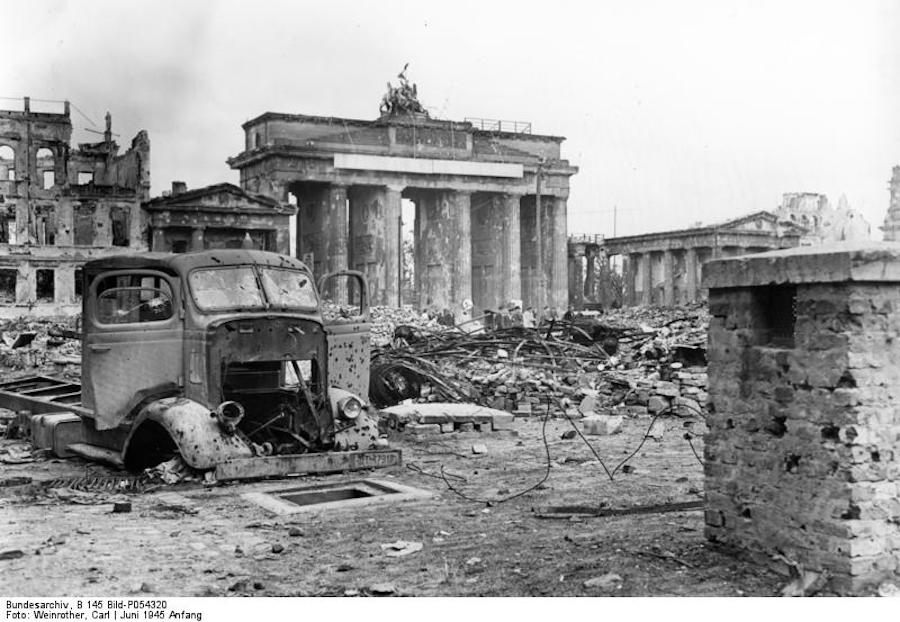
Bombed to the ground!
June 1945!
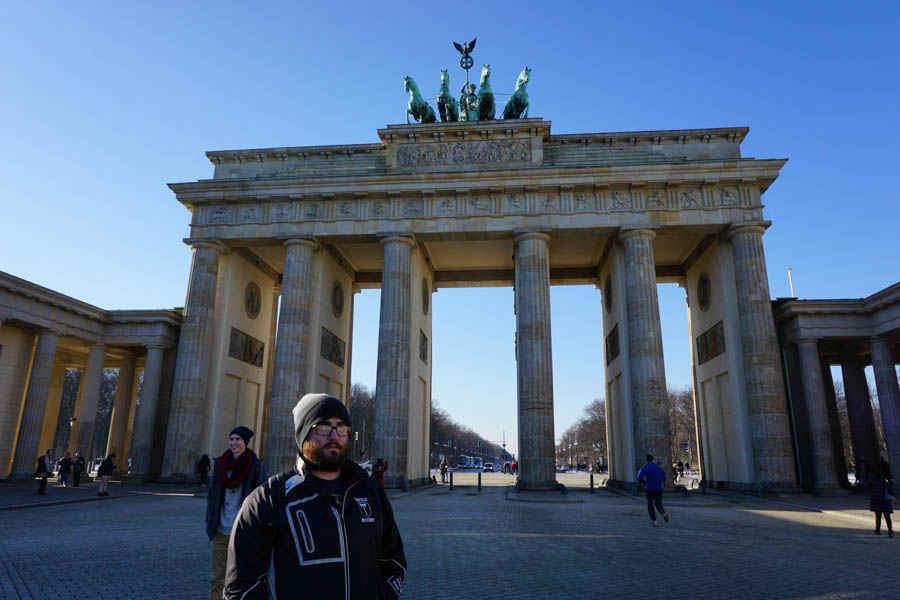
Harper visits the Brandenburg Gate which was one of 18 gates
used to enter the ancient walled area
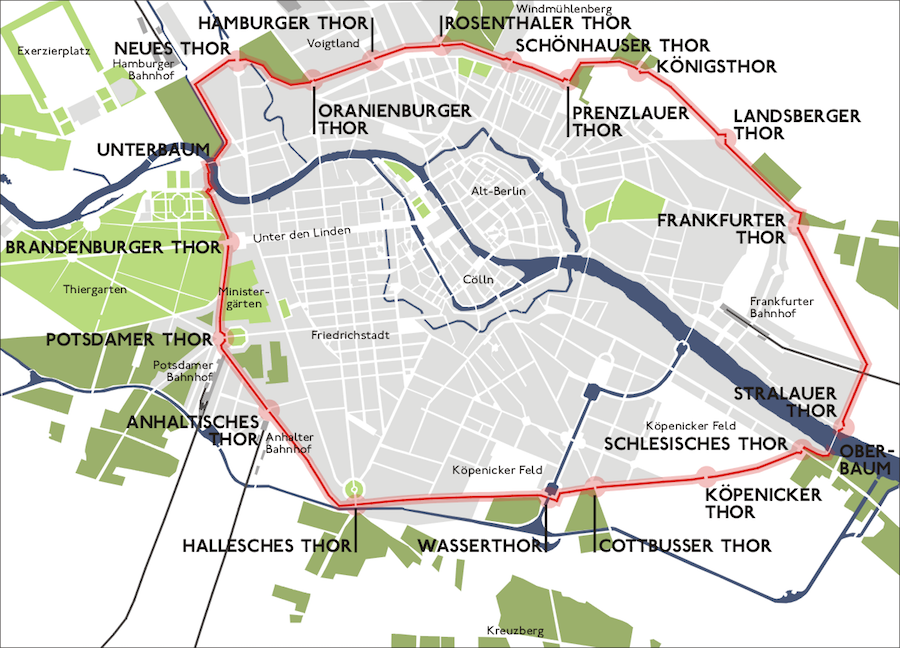
The Brandenburg Gate was not part of the old fortifications, but one of 18 gates within the Berlin Customs Wall ), erected in the 1730s, including the old fortified city and many of its then suburbs.
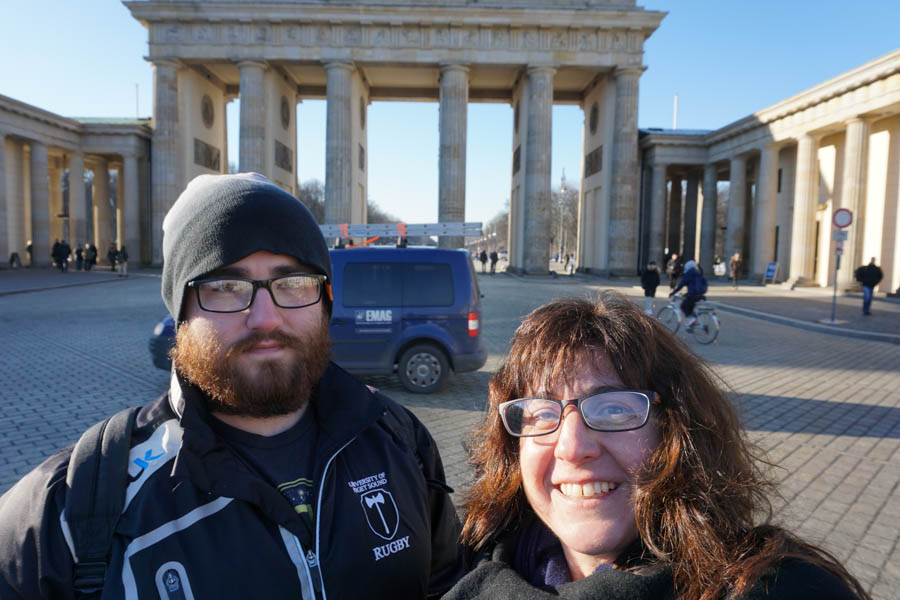
Walking in the
Pariser Platz
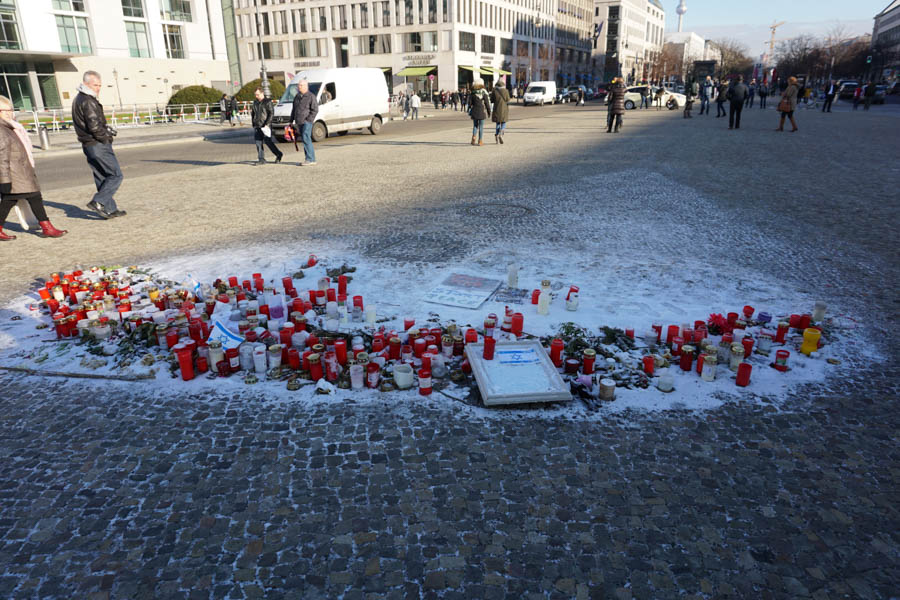
Remembering people and events is common in the plaza
Across The Street Is Tiergarten, Berlin's Largest Park
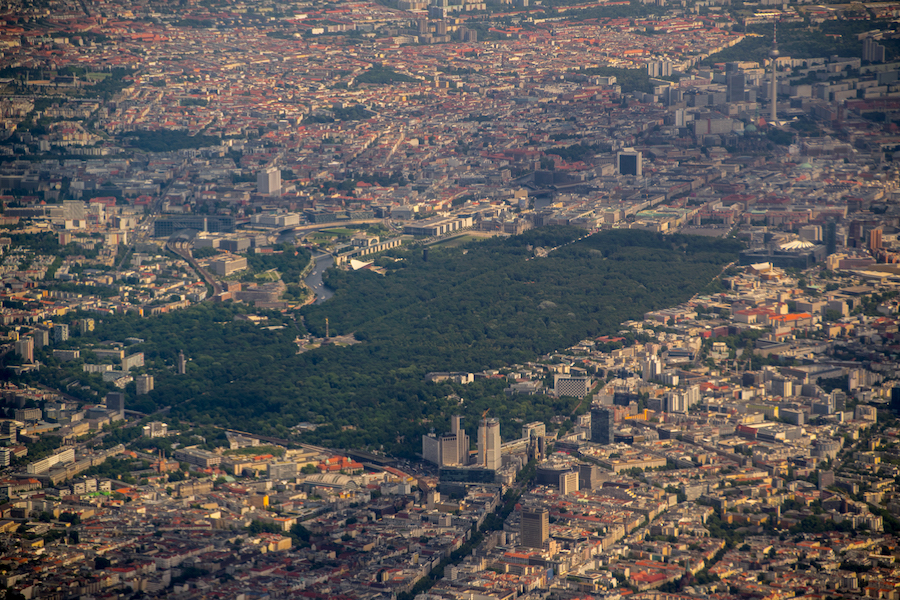
The park is huge - Click for a 6000 pixel aerial view
Quotation To Remember: The Tiergarten (formal German name: Großer Tiergarten) is Berlin's most popular inner-city park, located completely in the district of the same name. The park is 210 hectares (520 acres) in size and is among the largest urban gardens of Germany. Only the Tempelhofer Park (previously Berlin's Tempelhof airport) and Munich's Englischer Garten are larger.
The beginnings of the Tiergarten can be traced back to 1527.
Memorial to the Sinti and Roma Victims of National Socialism
Did You Know? - Between 1933 and 1945, Sinti and Roma ("Gypsies") suffered greatly as victims of Nazi persecution. Building on long-held prejudices, the Nazi regime viewed Gypsies both as "asocials" (outside "normal" society) and as racial "inferiors" believed to threaten the biological purity and strength of the "superior Aryan" race. During World War II, the Nazis and their collaborators killed tens of thousands of Sinti and Roma men, women, and children across German-occupied Europe.
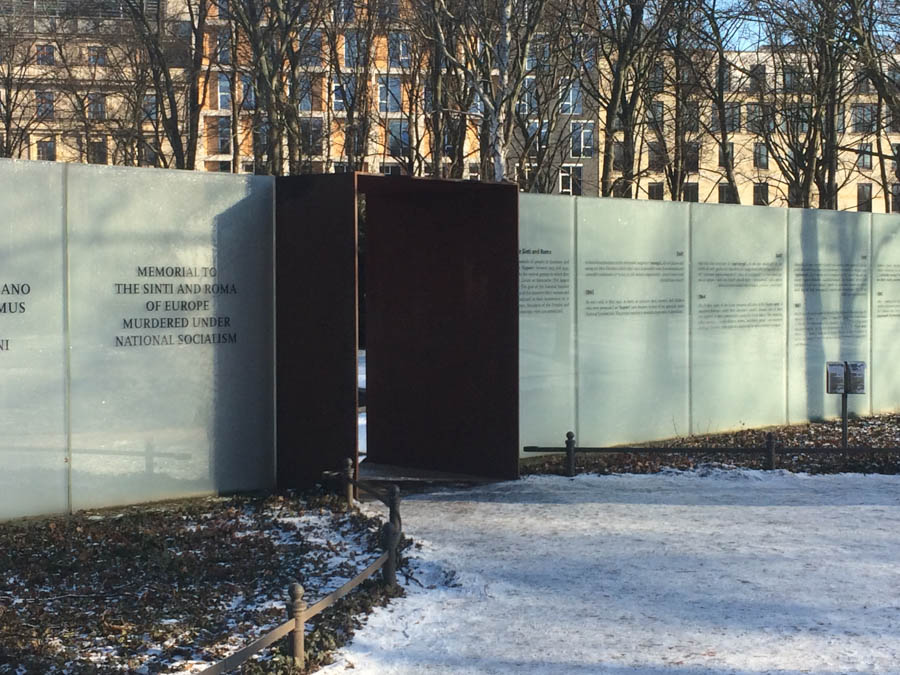
We visited the
Memorial to the Sinti and Roma Victims of National Socialism
which is inside the park area
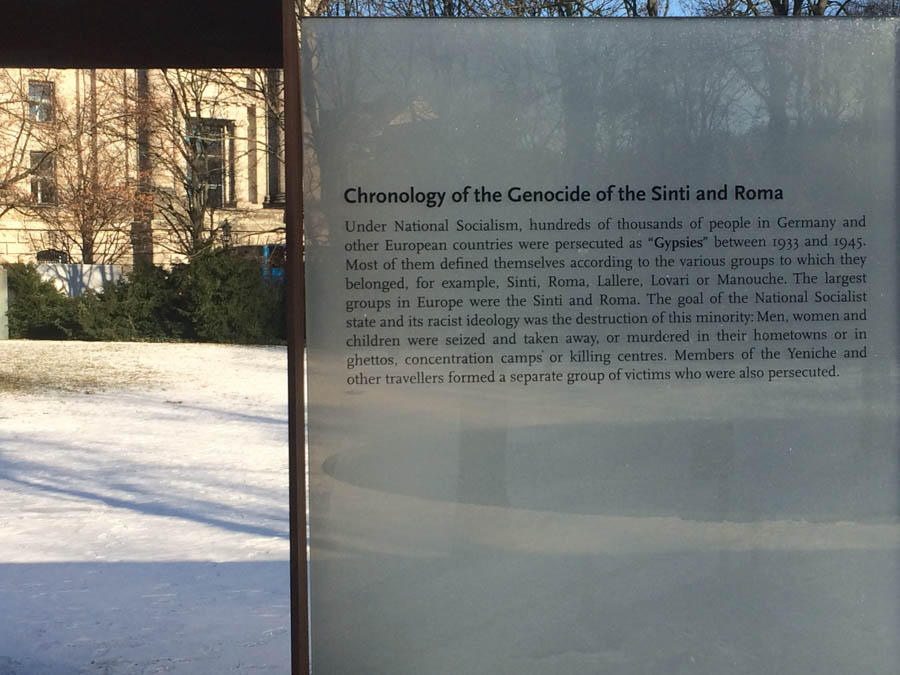
The story is told on the walls surrounding the memorial
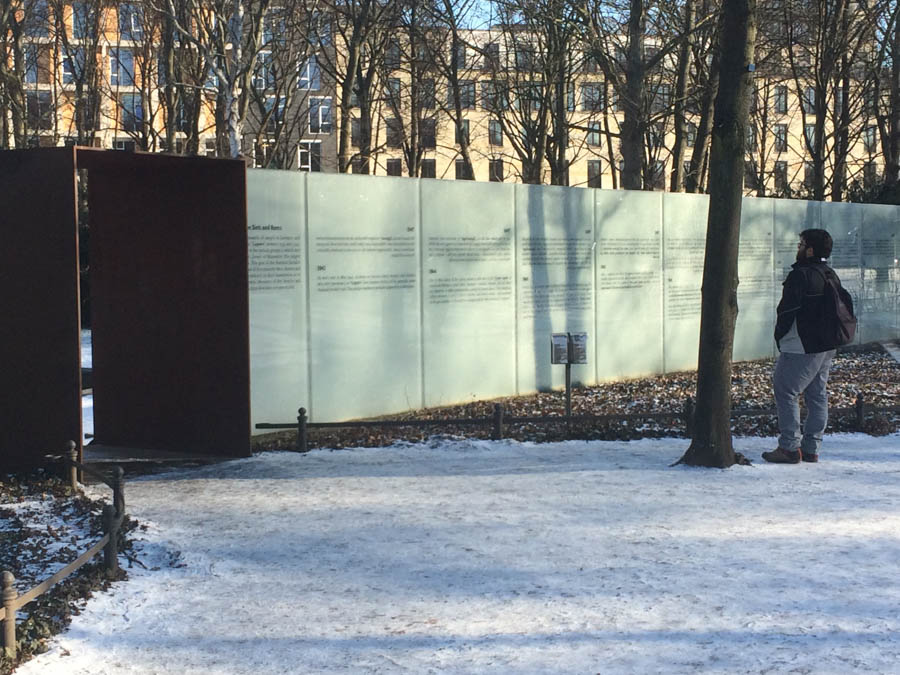
Hard to believe it actually happened
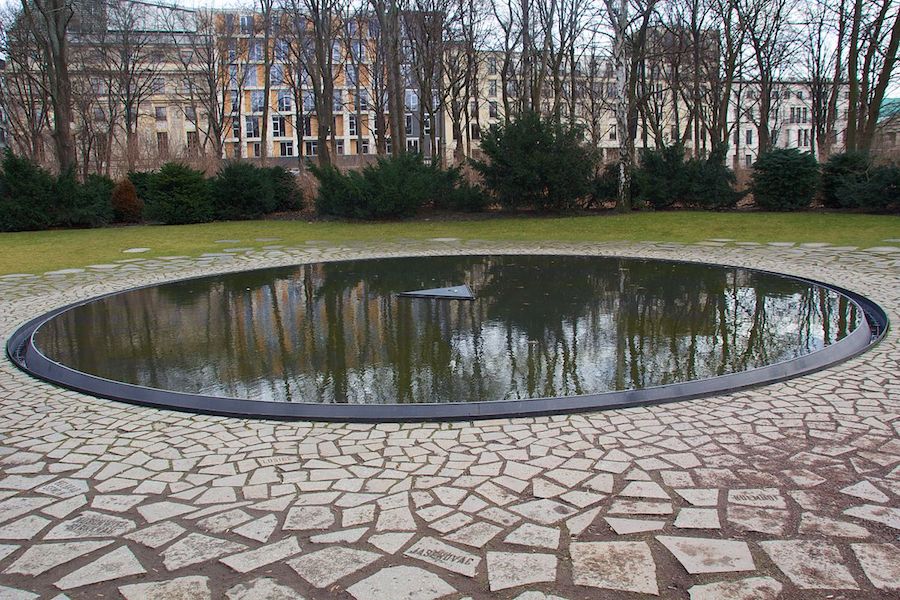
The Memorial Pool is solemnly quiet
Did You Know? - The establishment of a permanent memorial to Sinti and Roma victims of the Nazi regime was a long-standing demand of the Central Council of German Sinti and Roma and the German Sinti Alliance. In 1992 the Federal Government agreed to build a monument but the memorial faced years of delay and disputes over its design and location.
The city of Berlin initially wanted to place it in the less prominent district of Marzahn, where hundreds of Roma and Sinti were held in terrible conditions from 1936. In 2001 it was agreed to site it in the Tiergarten close to other Holocaust memorials but work did not officially commence until 19 December 2008, the commemoration day for victims of the Porajmos. The memorial was completed at a cost of 2.8 million euros and unveiled by Angela Merkel on 24 October 2012.
Time To Walk To Mitte (Middle) Berlin, The Oldest Burough In Berlin
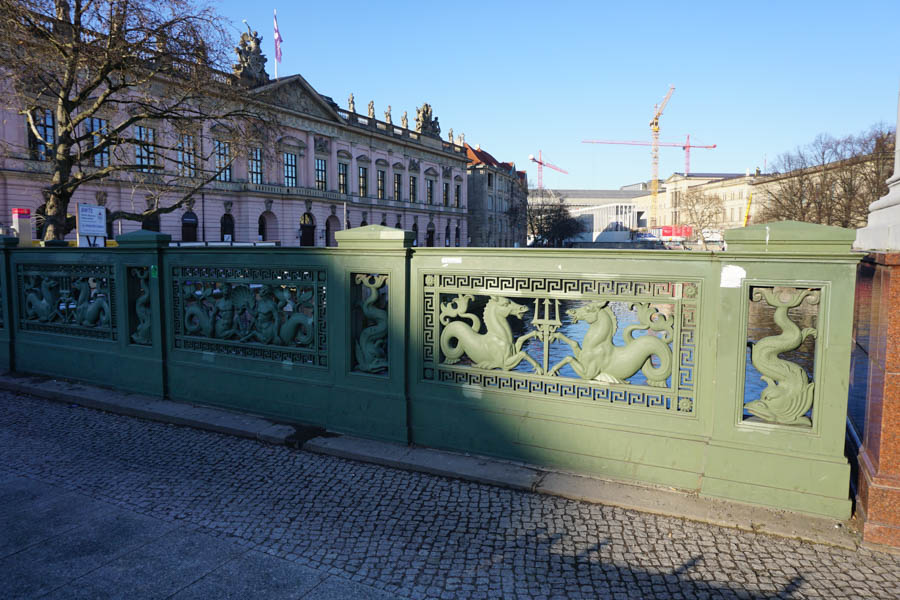
The old and the new

Monuments abound within the Mitte area (Berlin Cathedral background right)
This bridge crosses the Spree River
Did You Know? - The Spree is a river that flows through the Saxony, Brandenburg and Berlin states of Germany, and in the Ústí nad Labem region of the Czech Republic. Approximately 400 kilometres (250 mi) in length, it is a left bank tributary of the River Havel, which itself flows into the Elbe and then the North Sea. It is the river on which the original centre of Berlin was built.

The sky was blue and the temperatures cold! We are off to see the Berlin Cathedral
Did You Know? - Berlin Cathedral is the short name for the Evangelical Supreme Parish and Collegiate Church in Berlin, Germany. It is located on Museum Island in the Mitte borough. The history of today's Supreme Parish and Collegiate Church and its community dates back to 1451.
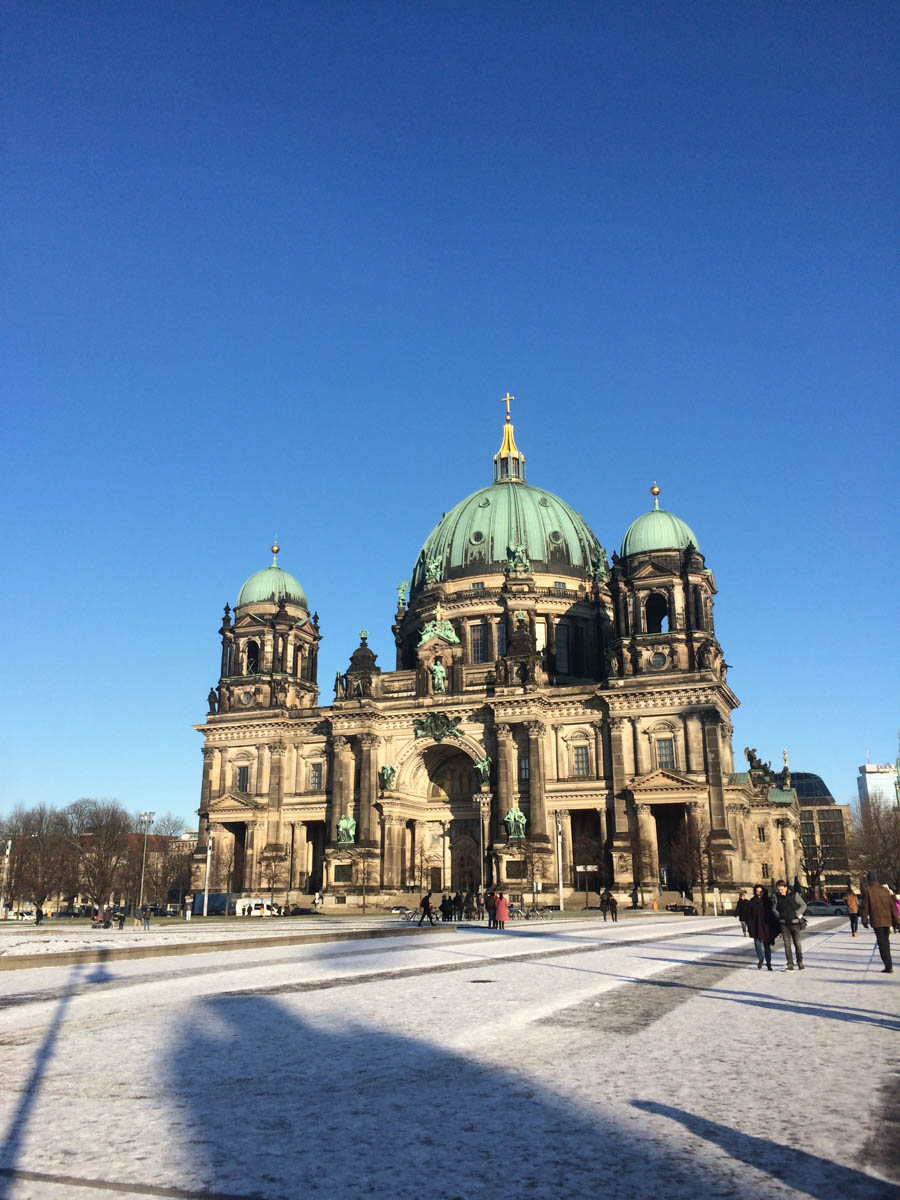
The Berlin Cathedral dates back 600 years!
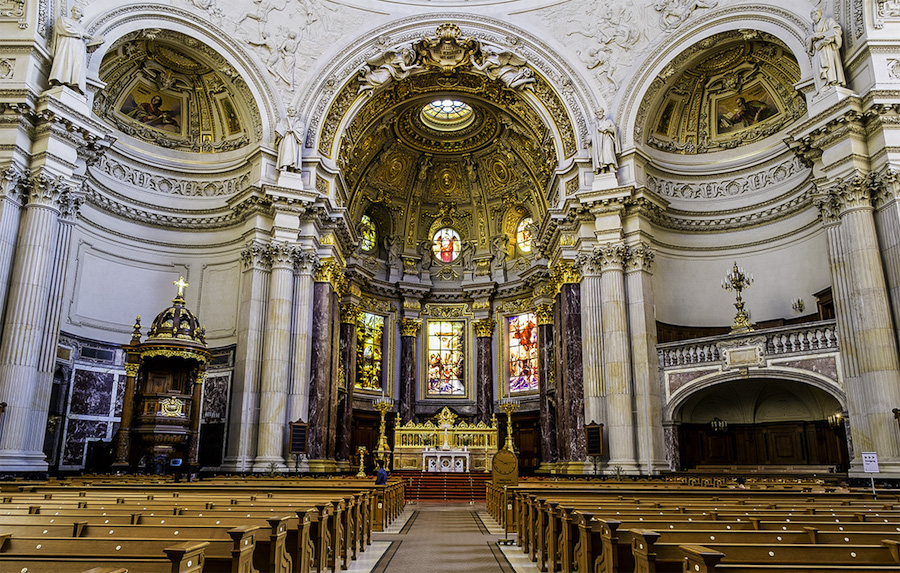
Feel a little small maybe?
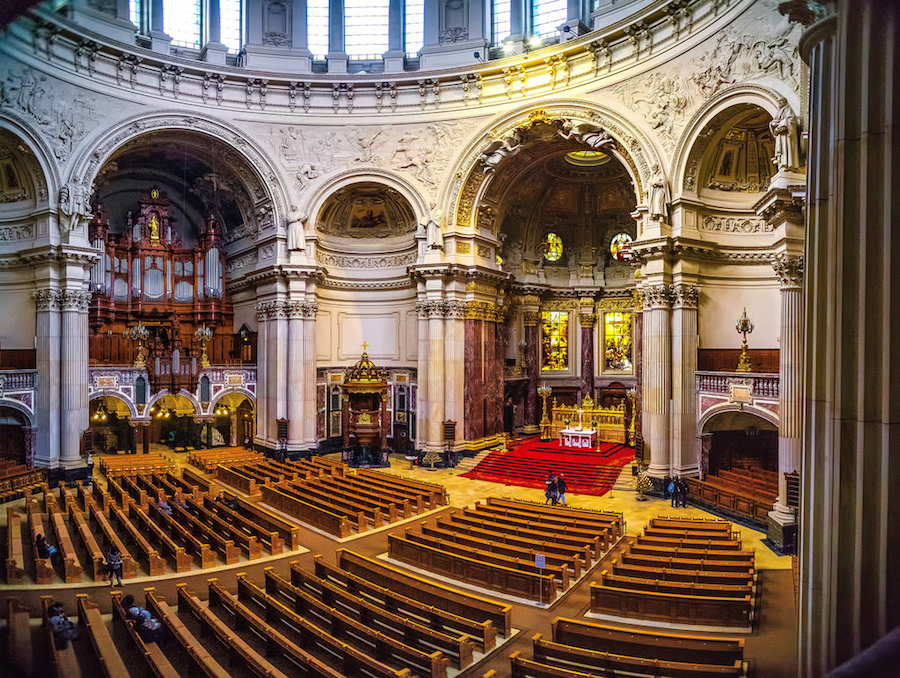
The people look like ants... or are they ants?
Did You Know? - The building has been redone many times:
1451 (first building)
ca. 1345 (2nd bldg)
1750 (3rd bldg)
1905 (4th bldg)
1993 reinaugurated after removal of war destructions
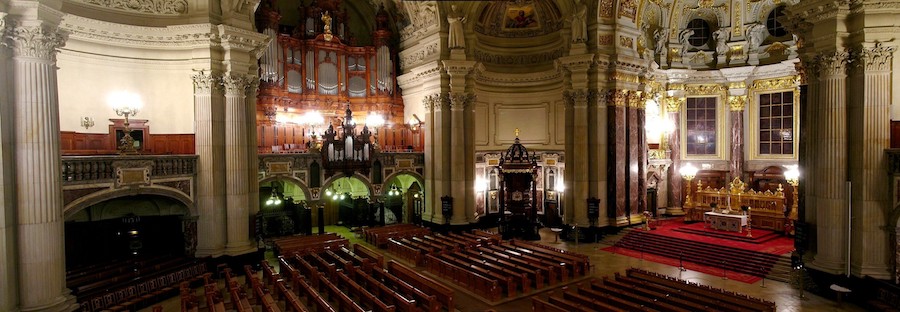
A magnificent interior (Click to see full sized image)
Time To Head For Home And Eat!!
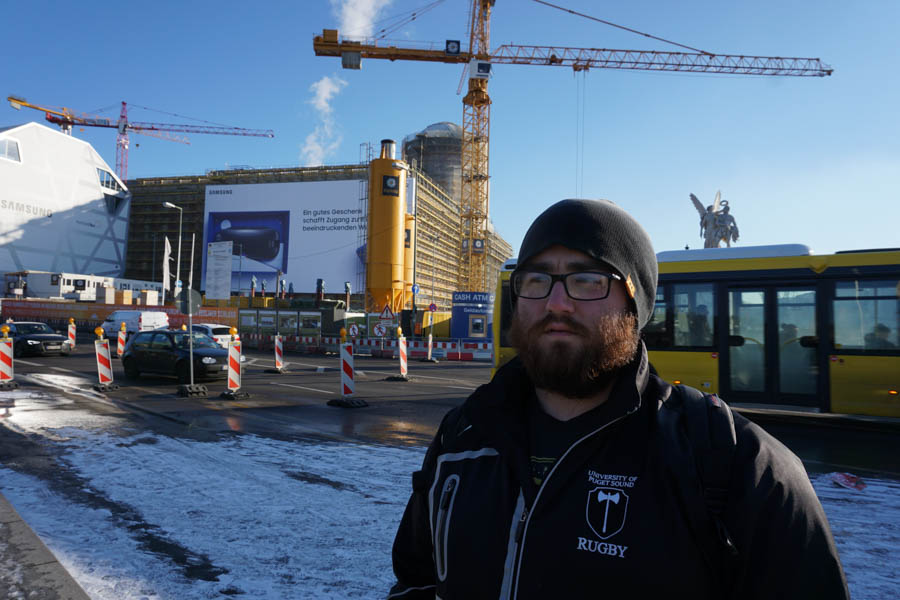
The city never sleeps... Always construction underway... Where is the subway??
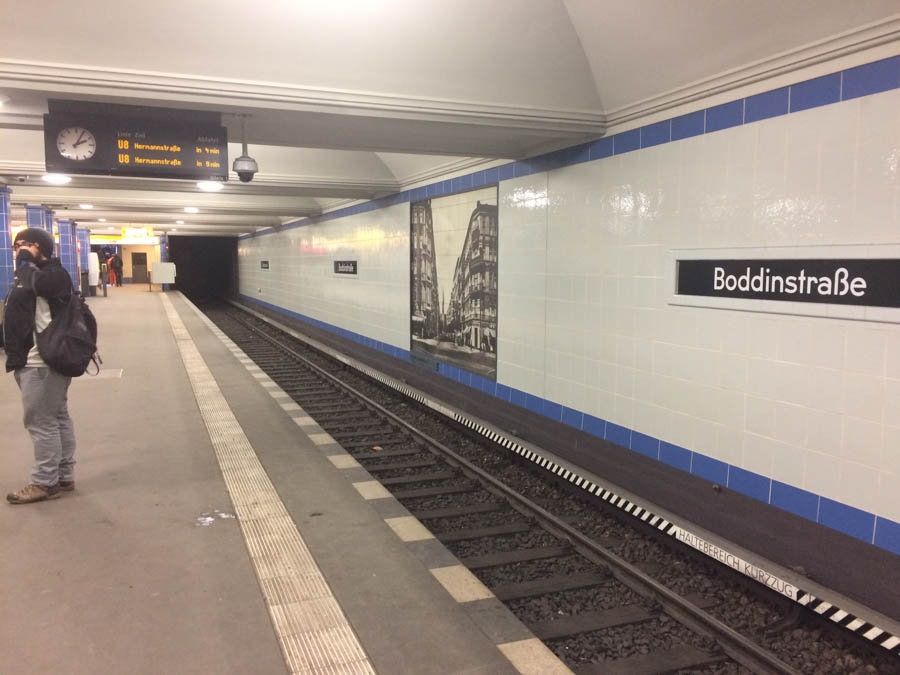
The "Tube" wisks us away to dinner and a nights rest
Did You Know? - The Berlin U-Bahn ([uː.baːn]; short for Untergrundbahn, "underground railway") is a rapid transit railway in Berlin, the capital city of Germany, and a major part of the city's public transport system. Together with the S-Bahn, a network of suburban train lines, it serves as the main means of transport in the capital. In addition, a tram network operates in the eastern parts of the city.
Opened in 1902, the U-Bahn serves 173 stations spread across ten lines, with a total track length of 151.7 kilometres (94.3 mi), about 80% of which is underground.
Trains run every two to five minutes during peak hours, every five minutes for the rest of the day and every ten minutes in the evening. Over the course of a year, U-Bahn trains travel 132 million km (82.0 million mi), and carry over 400 million passengers.
In 2012, 507.3 million passengers rode the U-Bahn.[2] The entire system is maintained and operated by the Berliner Verkehrsbetriebe, commonly known as the BVG.
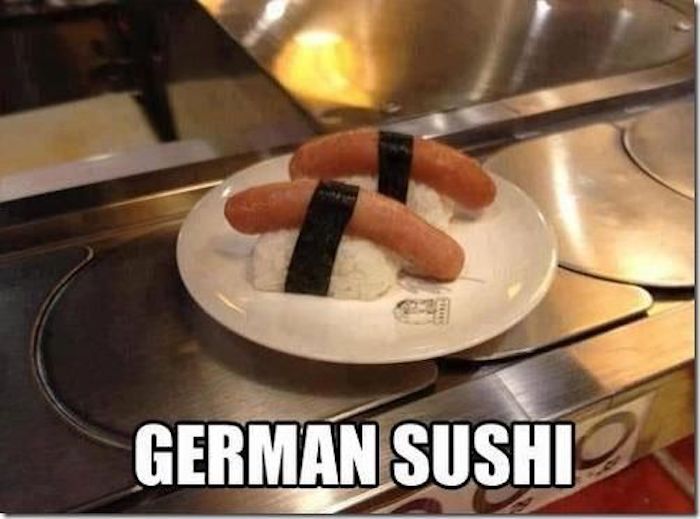
Time to dine...
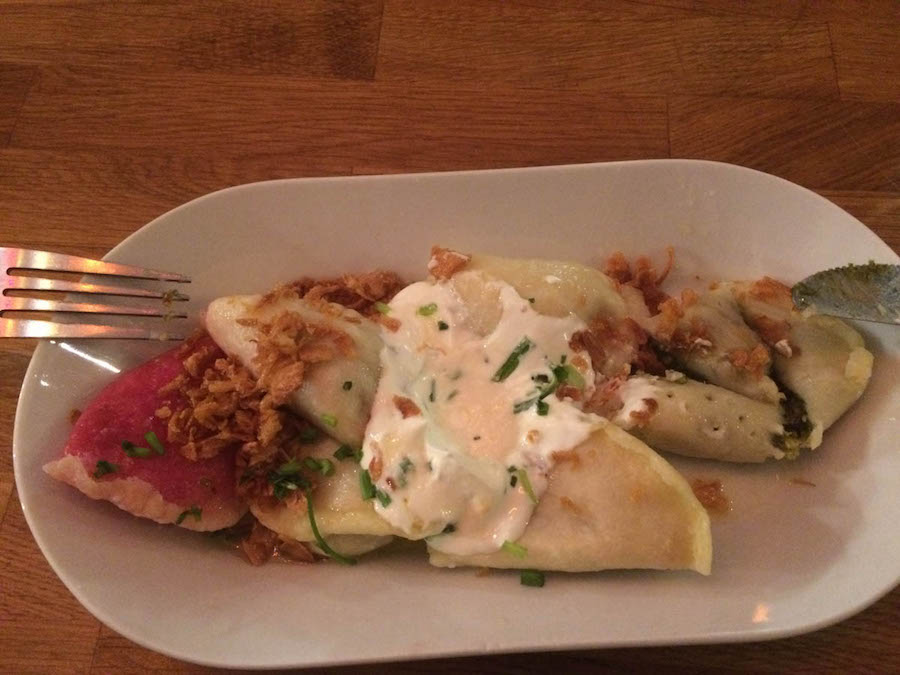
Time to dine and rest for tomorrow
What Shall We Do Tomorrow? Decisions Decisions!

